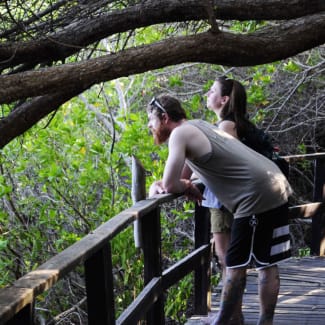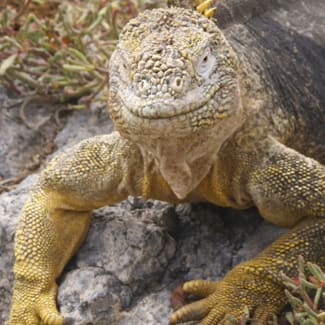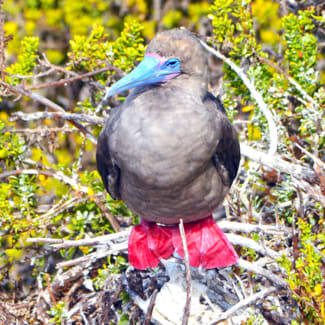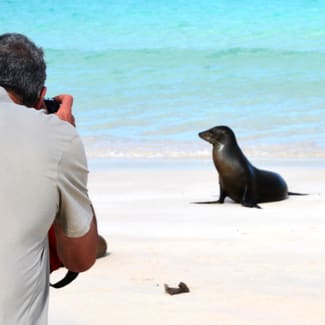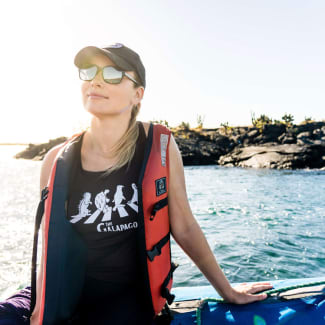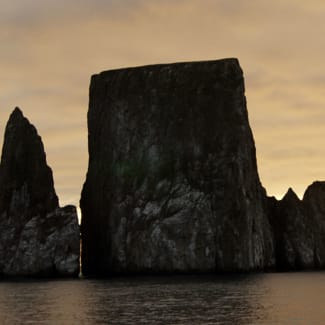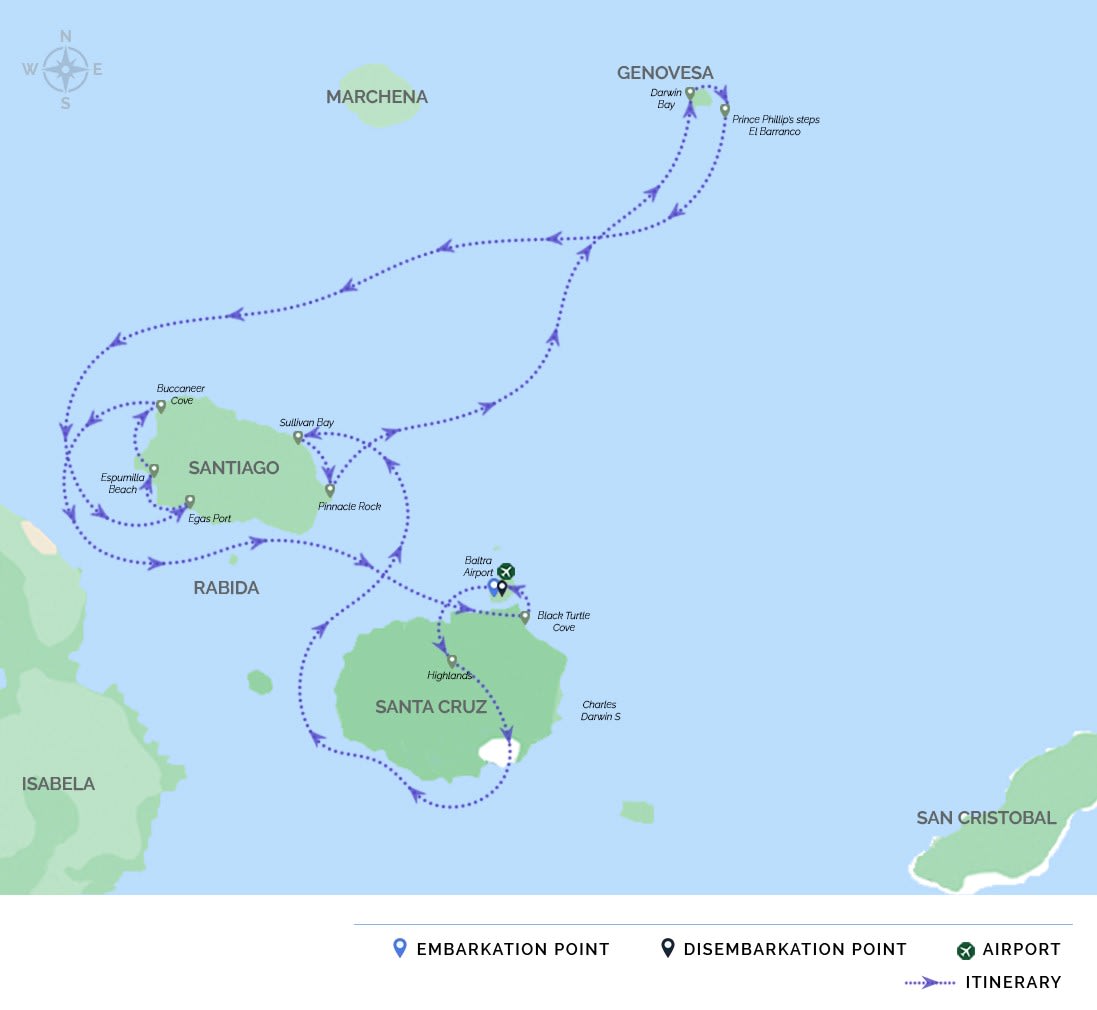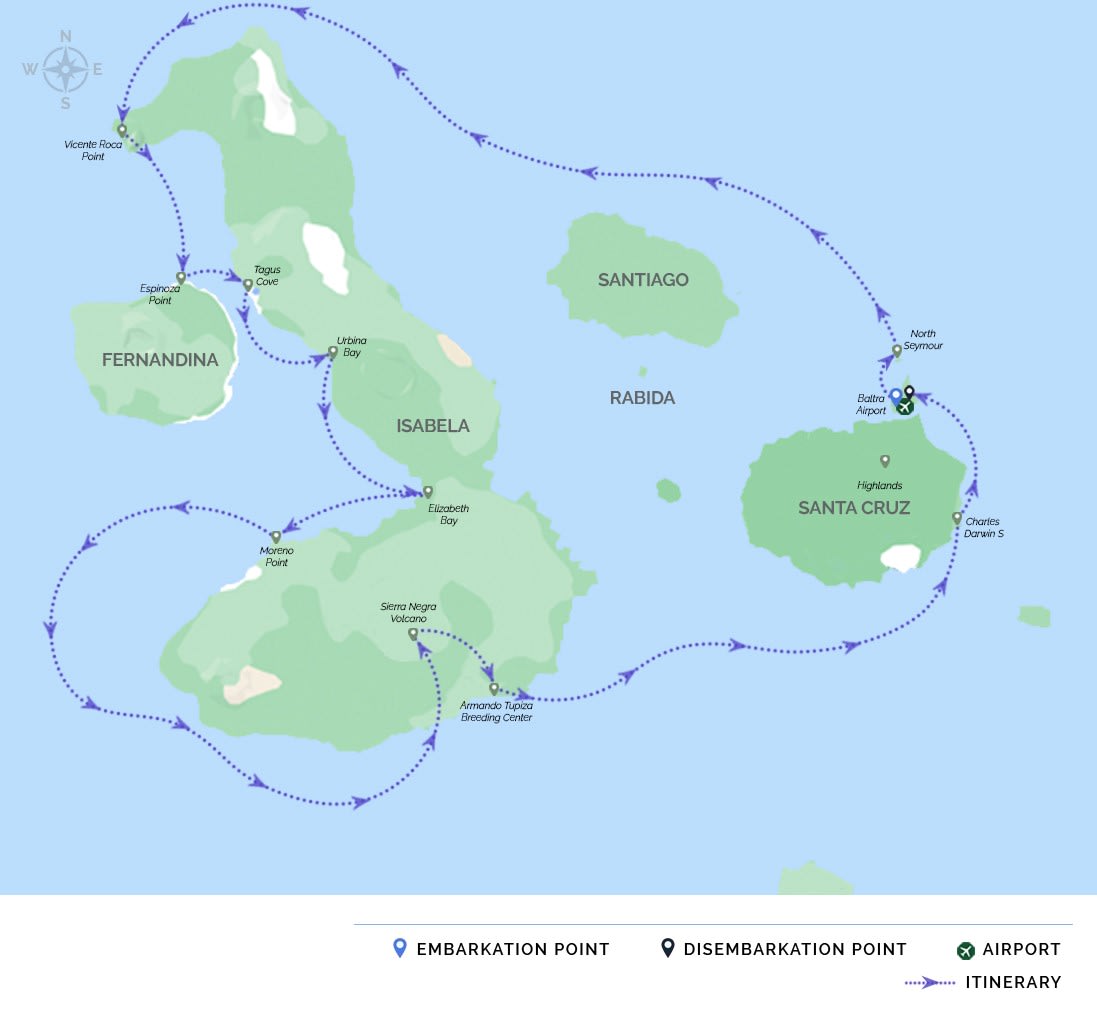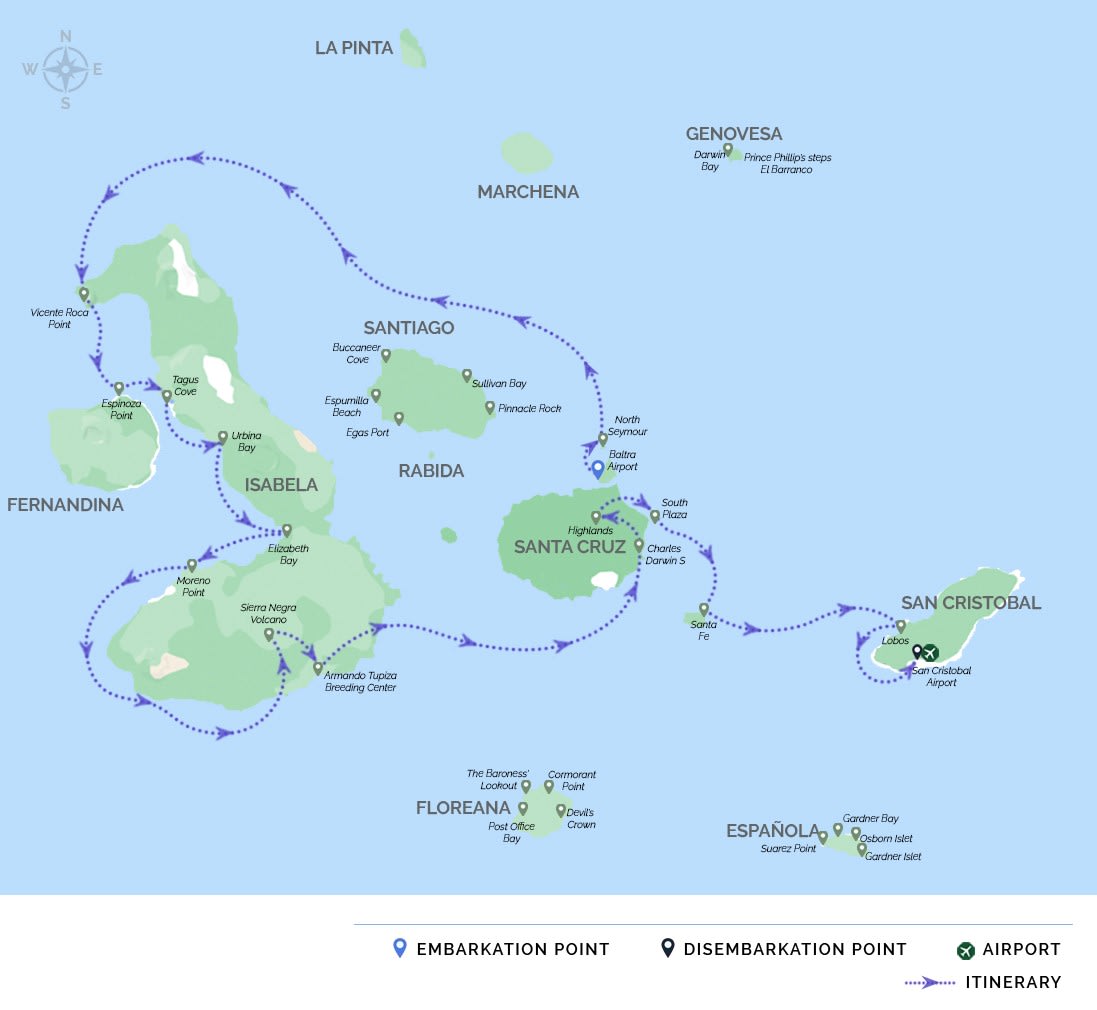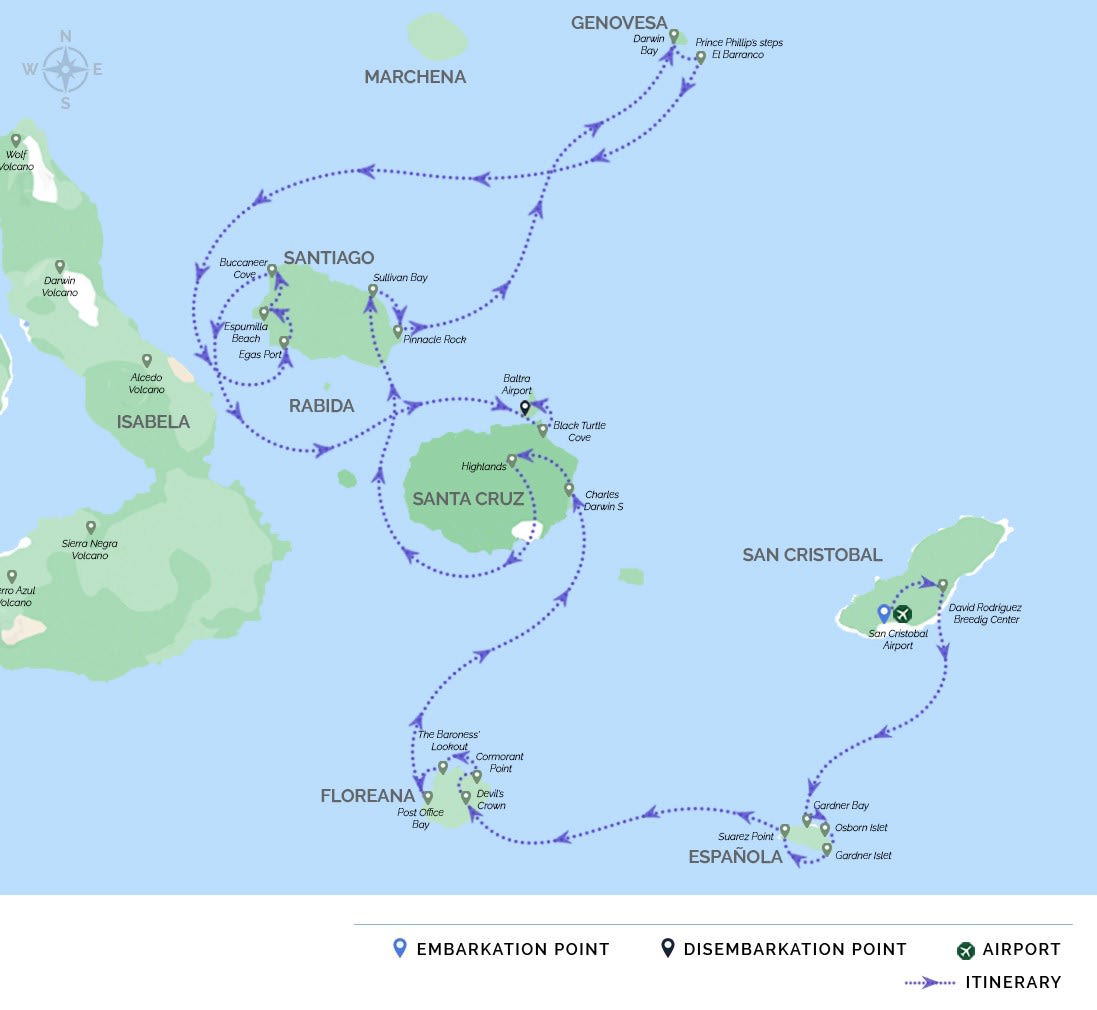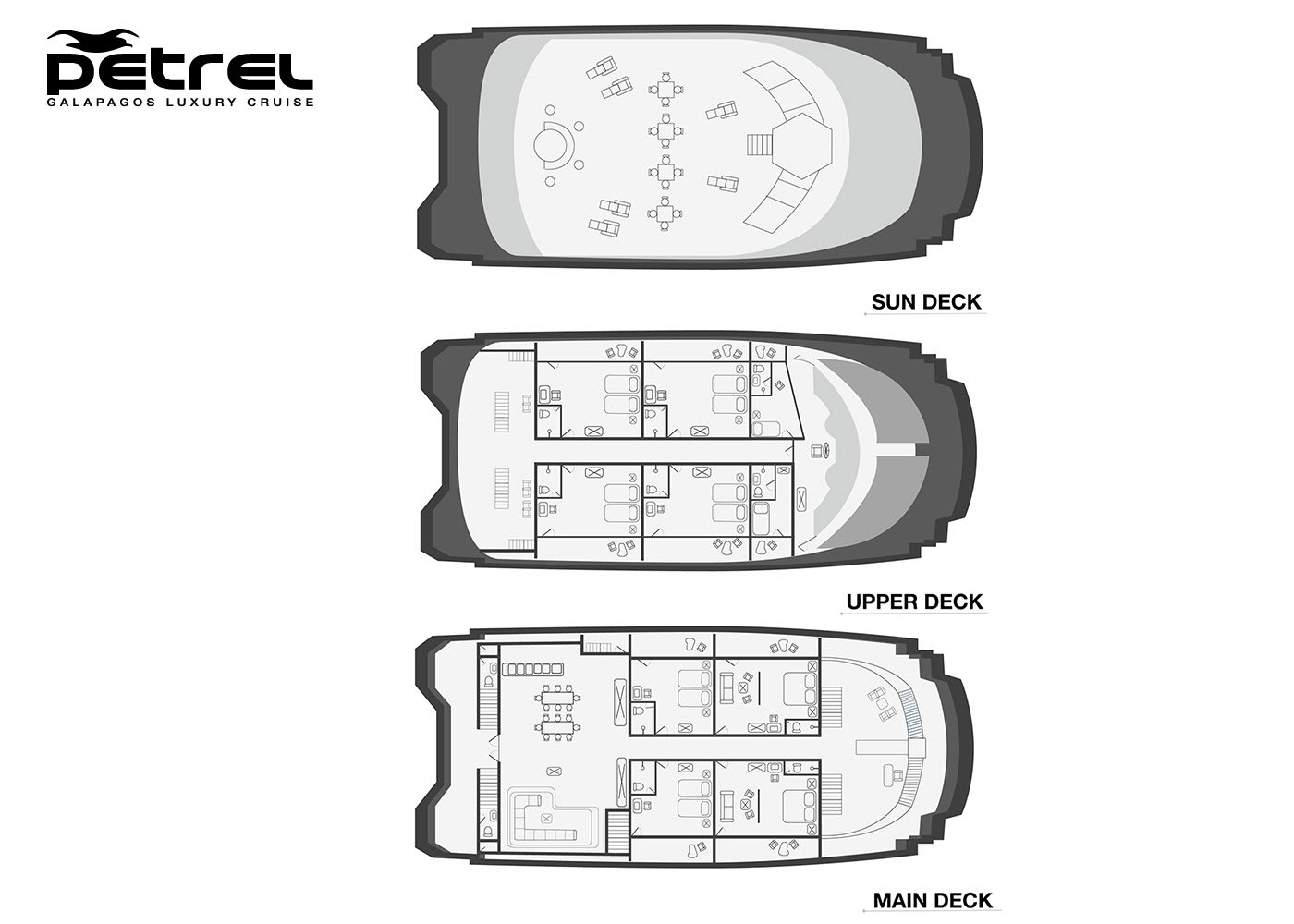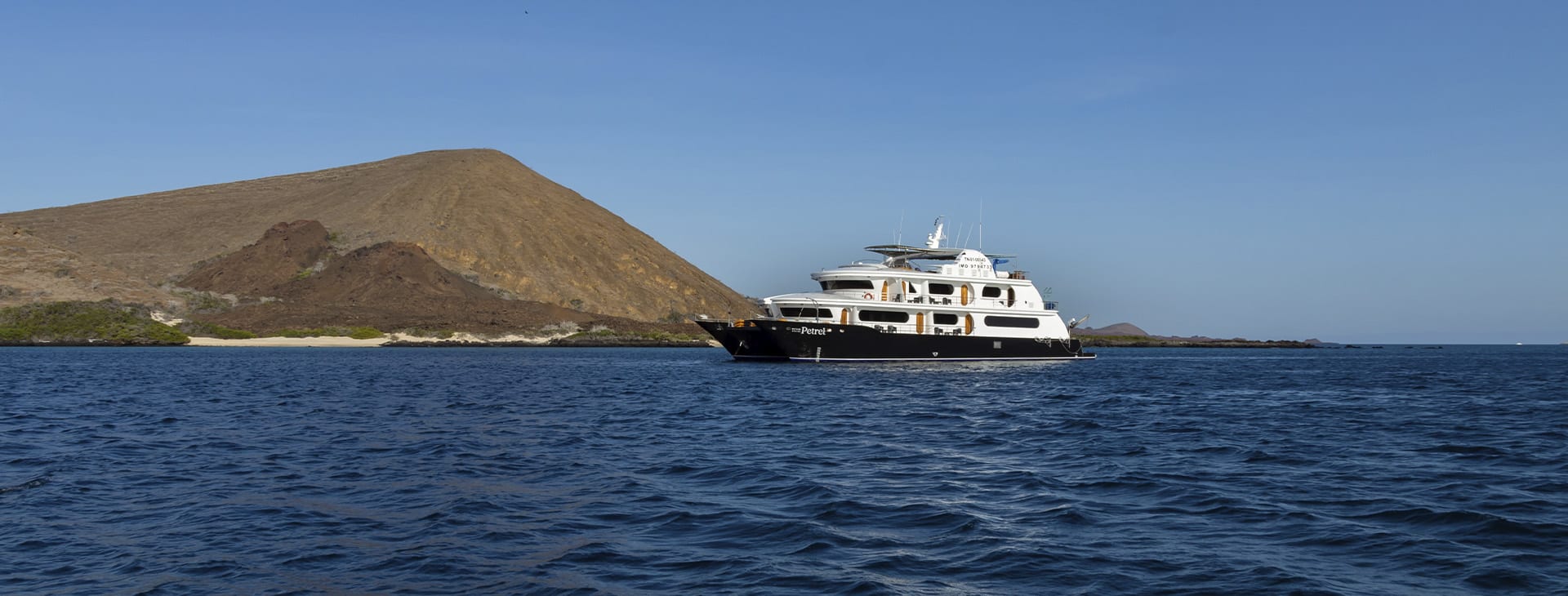
-
Honeymoon
-
Solo
-
Adventure
Overview
The Petrel is a nine-cabin catamaran that welcomes up to 16 guests on luxury cruises throughout the Galapagos. With itineraries of four, five, six, and eight days, the Petrel offers a wide range of routes, allowing you to explore the parts of the archipelago that most entice you.
Life Aboard The MC Petrel Galapagos
As you board the Petrel, you are instantly surrounded by elegance. Suddenly, you are in a comfortable, sophisticated space that encourages you to connect with nature while also spoiling you while all the hallmarks of an upscale holiday.
Imagine waking up in your air-conditioned cabin, complete with modern décor and plush linens, and stepping out on your private balcony. It’s the perfect spot to sip a cup of coffee and listen as the wildlife around you rises for the day. Grab your camera and head to the partially-shaded sun deck. With a bit of luck, you may be able to snap a photo of a frigatebird as they escort the ship to your next destination.
Breathe in the warm sea air as you settle into the Jacuzzi for a relaxing soak. In the evening, enjoy Ecuadorian and international dishes, complete with a glass of wine. No matter where you are on the ship, you will have the attention of 11 crew members, including a concierge, who will work to make your holiday a success.
Excursions From Your Petrel Cruise Galapagos
With six different itineraries, ranging from four to eight days, the Petrel offers a more extensive range of options than many other boats in the area. A stop at Galapaguera on San Cristobal Island, which is included in several routes, is a chance to observe warblers, mockingbirds, and giant tortoises. At Darwin Bay on Genovesa Island, spot Nazca and red-footed boobies and get a peek at hammerhead sharks.
Visit Buccaneer Cove and see how sea turtles dig nests and lay eggs in the sandy beach. For many guests, a stop at Puerto Egas on Santiago Island is a highlight of their time in the Galapagos. Here, you may see fur seals and sea lions along with rays, marine iguanas, and reef sharks. Every activity is led by a naturalist guide, who will ensure your safety and share expert knowledge of the Galapagos’ flora and fauna.
Focus On Social Responsibility
The team behind the Petrel Catamaran is dedicated to protecting the ecosystem and culture of the Galapagos through careful exploration. In this spirit, the Petrel operates in an environmentally-conscious manner while also providing opportunities to local people and communities, and providing high-quality service to every guest.
Thanks to its twin hulls, the Petrel catamaran is a smooth-sailing, stable ship that will put even first-time cruisers and those with seasickness feel at ease. And, solo travelers will appreciate the single cabin. Whether you are a wildlife lover or looking for an exciting getaway, a Petrel cruise is an unforgettable experience.
Itineraries & Prices
All itineraries are subject to change due to seasonal weather conditions (and resultant variations in river and tributary water levels) affecting accessibility to locations. Thus navigation routes, times and excursions may need to be modified at the cruise captain’s or your guide's discretion.
Embarkation
AM: A Petrel representative will provide assistance upon arrival after passing through immigration and baggage claim. When ready, you will be transferred to the yacht. You will then be shown to your cabin where you will have some time to settle in before the welcome briefing and lunch.
PM: San Cristobal is the fifth largest island in the Galapagos and lies farthest East. It is where Darwin first landed back in 1835 and where the first permanent settlements were founded. Today the main port Puerto Baquerizo Moreno is the capital of the Galapagos province and houses many government offices, the Ecuadorian Navy, and an airport with daily flights to the mainland of Ecuador. Conservation challenges the island faces include invasive plants like blackberry and guayaba and insects like the blackfly.
A visit to the David Rodriguez Breeding Center provides information about the origin and evolution of the giant tortoise and explains why the center is so vital in safeguarding the future of these incredible creatures. Walking through the trails of the reserve, you can see baby tortoises being reared in semi-natural conditions - a brilliant demonstration of the commitment the local people have to preserving the wildlife that makes the Galapagos so special.
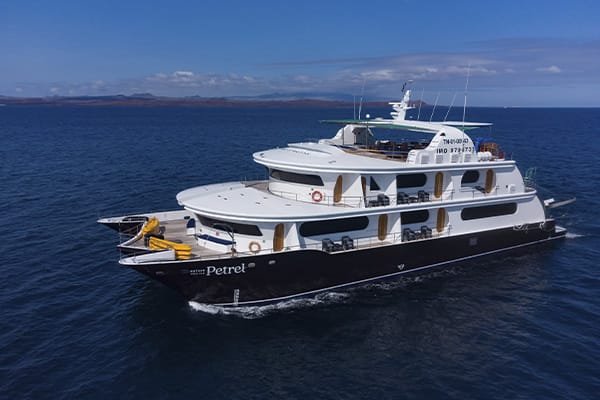
Gardner Bay & Suarez Point
AM: Española is the southernmost island in the Galapagos, as well as the oldest. It is estimated to be about four million years old. Because it is so far away from the other islands it has the most endemic species. It is a wonderful opportunity for some great photography of endemic bird species that are found only on Española and awesome landscapes created by millions of years of erosion.
Visit one of the best beaches in the Galapagos. The white sandy beach is home to a large colony of friendly and playful sea lions. Three different types of finches can be seen. The Espanola Mockingbird is very friendly, but probably looking for food. At one point in time, tourists must have given it water or food, which taught them bad habits. The site is also where green sea turtles will come to nest their eggs between January and March.
PM: This is a phenomenal site where you will get to see many of Española Island’s endemic species. The trail will pass by the only Waved Albatross breeding site. If you are lucky, you might see a young albatross, take off for its first flight for up to five years at sea. Older birds stay at sea for months at a time, only coming back to breed. They have the same mate for life and will meet each other each year, only here to reproduce. Other species that can be seen are marine iguanas that stay brightly colored year-round, Galapagos doves, Nazca boobies, blue-footed boobies, swallow-tailed gulls, red-billed tropic birds, and Darwin finches.
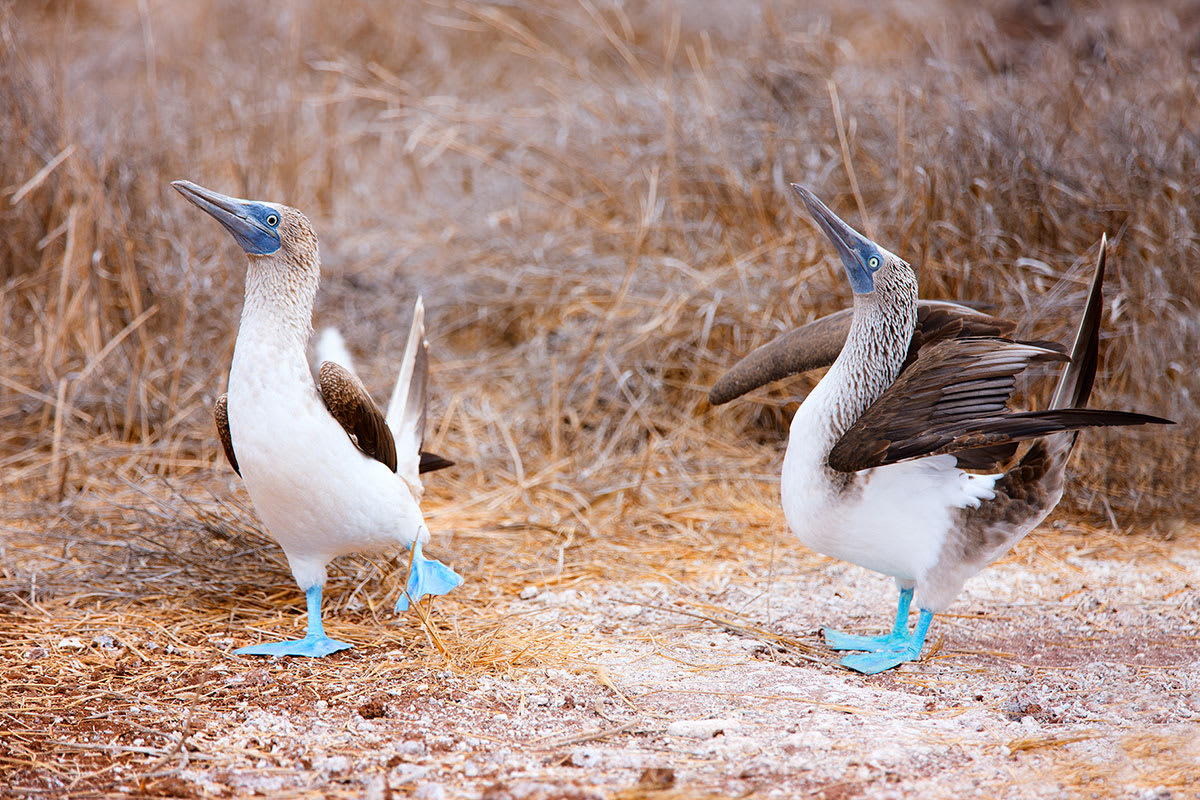
Devil’s Crown/Cormorant Point & Post Office Bay
AM: Floreana Island is one of the most interesting when it comes to human history. The first Galapagos resident was an Irishman who lived on Floreana from 1807 to 1809. It is the site of the first post office within the islands created by whalers in the 1700’s. Later it became the first island to be colonized by Ecuadorians, but to this day is still very isolated. Surrounded by mystery, in the 1930’s various disappearances occurred and is thought to be because of tension between a baroness and her three servants who arrived after an already settled husband and wife, who gave birth to the first to be born in Galapagos and another couple of a doctor and female companion who lived of the land from their garden. The small population of today lives off the land with home grown farms and gets their water from rain filled ponds during the rainy season. There is one hotel with the only phone in the port of Velasco Ibarra where most residents live, the rest live up in the highlands. Transportation is limited and is only available every two weeks.
Devil’s Crown is a visitor site that boasts the best snorkeling opportunities. Below the surface are amazing volcanic structures that have submerged over time. Hundreds of different colorful fish species can be found here among the coral reefs. Sharks, rays, sea turtles, hammer head sharks and sea lions are also common visitors. It is an underwater spectacle that cannot be missed.
PM: A completely human influential site, Post Office Bay is the first official post office created by passing whalers in the 1700’s. To this day visitors continue the tradition as many leave addressed messages on post cards in the barrel to be sent by future visitors while picking up post cards left behind by previous visitors to send when they return home. It is a fun exchangeable activity many visitors enjoy.
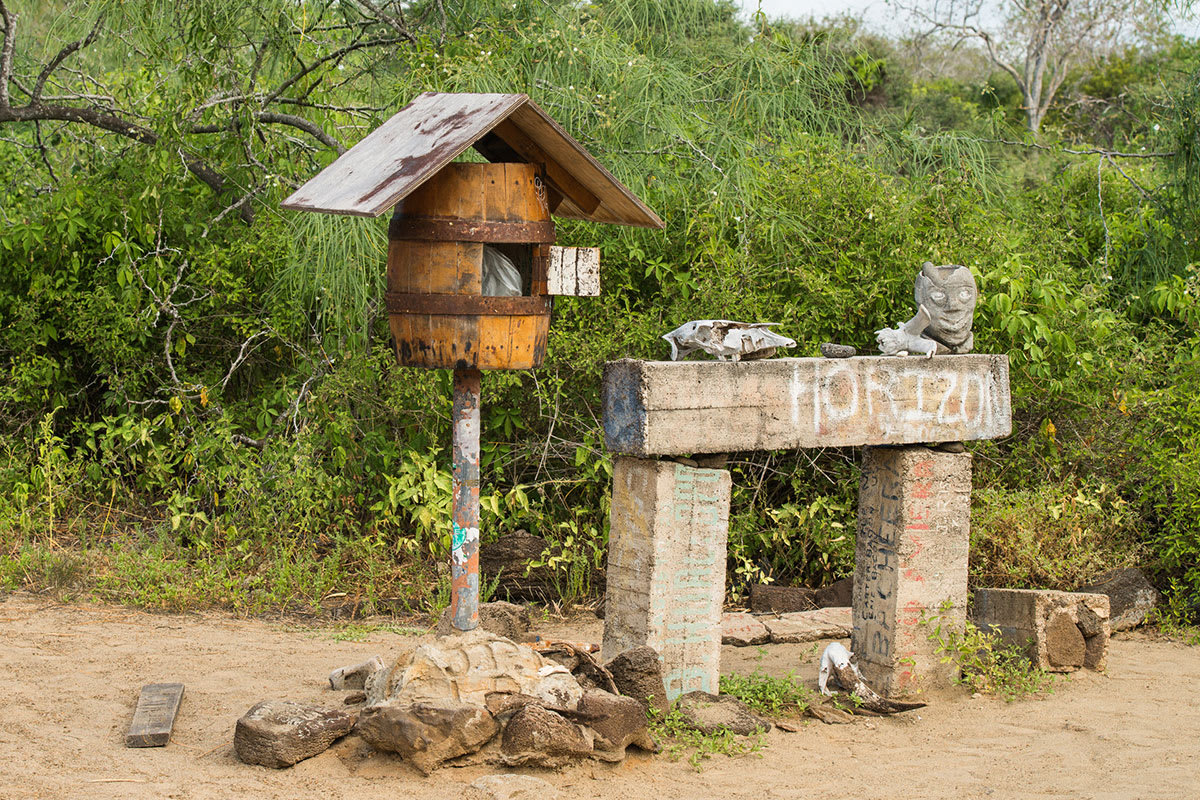
Disembarkation
AM: Today Santa Cruz is one of the most popular tourist sites. With a population of about 12,000 Galapagos natives, it has the longest paved road in the entire archipelago. One of the biggest conservation efforts is to eliminate all non-native plants and animals that are destroying native and endemic species on the island. There is no longer any volcanic activity but that does not mean there is no evidence. Santa Cruz means holy cross, but its English name comes from the British vessel – Indefatigable.
The Charles Darwin Research Station conducts many different research projects and provides assistance to other researchers and governmental institutions and agencies, especially the Galapagos National Park. Many of the results are later published online, in magazines, and popular scientific journals. The research station also plays a big part in educating the community and public schools in Galapagos. There is also the longtime running Giant Tortoise restoration program that includes various stages of the giant tortoise from eggs, hatchlings and adults.
After the morning excursion, you will be assisted to Baltra airport for your flight to the mainland.
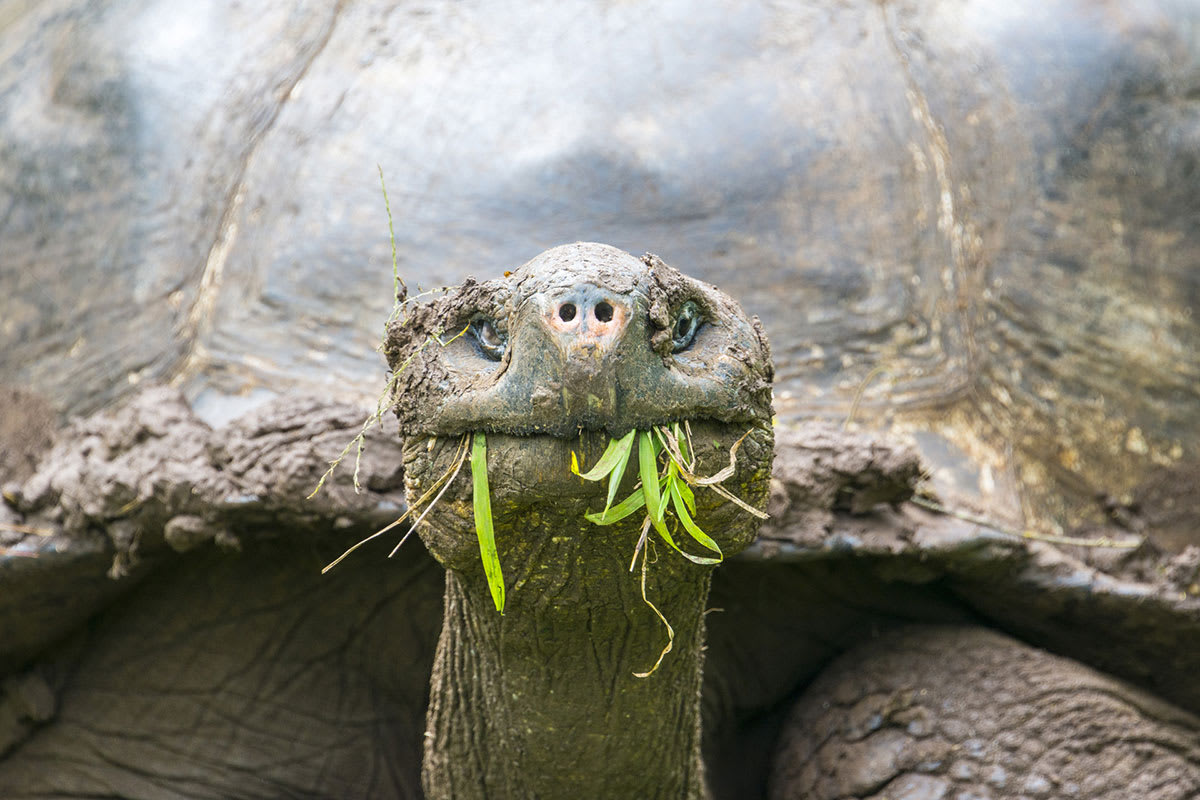
Embarkation
AM: A Petrel representative after passing through immigration and baggage claim. When ready, you will be transferred to the yacht. You will then be shown to your cabin where you will have some time to settle in before the welcome briefing and lunch.
PM: Today Santa Cruz is one of the most popular tourist sites. With a population of about 12,000 Galapagos natives, it has the longest paved road in the entire archipelago. One of the biggest conservation efforts is to eliminate all non-native plants and animals that are destroying native and endemic species on the island. There is no longer any volcanic activity but that does not mean there is no evidence. Santa Cruz means holy cross, but its English name comes from the British vessel – Indefatigable.
The Highlands of Santa Cruz is a very interesting site due to the rich wildlife, hills, ferns, volcanoes and lava tubes present. Exploring the lava tubes is a surreal and unique experience. Here you can see all the different agricultural zones that are present in the Galapagos in one place. The variety of birds makes this a bird watchers delight.
Be prepared to admire the famous giant tortoises in the wild. It is impressive to see these endemic animals that give the name to the archipelago, Galapagos. Birdwatching is also one of the activities in the highlands, since this area is home of finches and other Galapagos birds. Finally, we walk into lava caves to see the enormous lava flows that formed the islands before continuing back to the M/C Petrel.
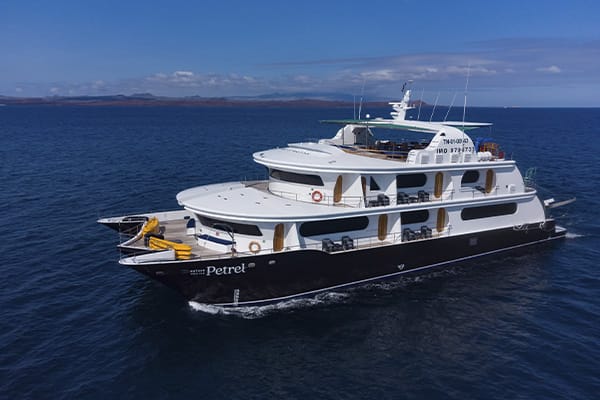
Sullivan Bay & Pinnacle Rock
AM: Santiago Island is the second Island visited by Charles Darwin was originally named after England’s King James the second. The island was a good source of salt, water and food for whalers and buccaneers passing. There was a salt mine inland that was used to salt fish and tortoise meat. Land iguanas used to populate the island but are now extinct. From Darwin’s own notes he wrote that land iguanas were thriving quite well since there was no place to even pitch a tent. Santiago Island today is now one of the most visited islands.
Sullivan Bay is a satellite island of Santiago. This is one of the best places to see the Galapagos fur seal. There is not much wildlife to see here, but the old lava formations are quite a site to see with tuff cones, pyroclastic cones, and other volcanic landscapes.
PM: Bartholomew is another satellite island that derives from Santiago Island. It is home of the famous Pinnacle Rock and is named after James Sullivan, a friend of Charles Darwin who was also aboard the HMS Beagle. Of all the islands, this is the most photographed and is also featured in the 2003 movie “Master and Commander”.
Pinnacle rock is a volcano cone formed by magma expelled by an underwater volcano. The sea cooled the hot lava and as it exploded from contact, the pieces formed together this huge rock of many, many layers of basalt. The huge rock also has a beach where a small population of green sea turtles will nest. Galapagos penguins gather here and swimming can offer beautiful sights of colorful schools of fish and curious sea lions.
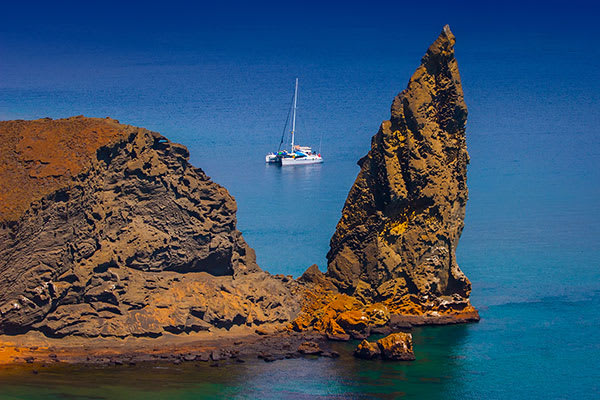
Darwin Bay & El Barranco
AM: Genovesa is a horse-shoe shaped island that was formed by the eruption of a shield volcano with large slopes formed by gradual lava flows. It is known as “Bird Island” due to the wide variety of birds that can be seen. The only reptile on the entire island is the marine iguana and it is one of the very few places red-footed boobies gather in one large mass.
Darwin Bay is the result of the shield volcano where one of the sides of the caldera collapsed after years of erosion. It is one of the places in the Galapagos where red-footed boobies can be guaranteed to be seen. Over 200,000 red-footed boobies are estimated to be living in the trees and bushes of Genovesa.
PM: Better known as Prince Phillip’s Steps, a steep and rocky path leads up to a cliff with a marvelous view. There is also a Palo Santo Forest that is home to nesting red-footed boobies and other birds.
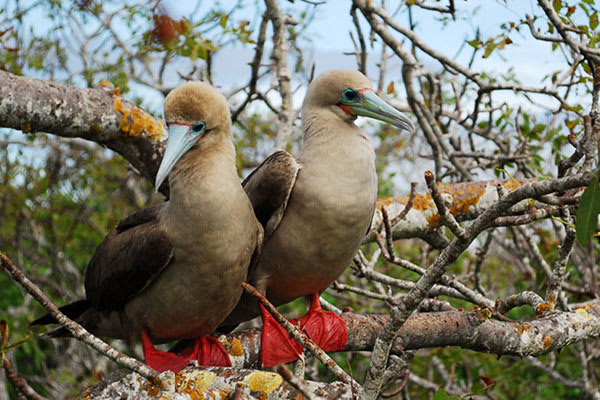
Egas Port, Buccaneer Cove & Espumilla Beach
AM: Egas port is also known as James Bay. It is home to quick footed Galapagos lava lizards, Galapagos fur seals along the grottos and tide pools and is a great snorkeling site.
PM: Buccaneer Cove: This cove is better known for excellent snorkeling opportunities and was once known as a refuge for British buccaneers or pirates. The underwater formations are amazing and many different species of fish gather here.
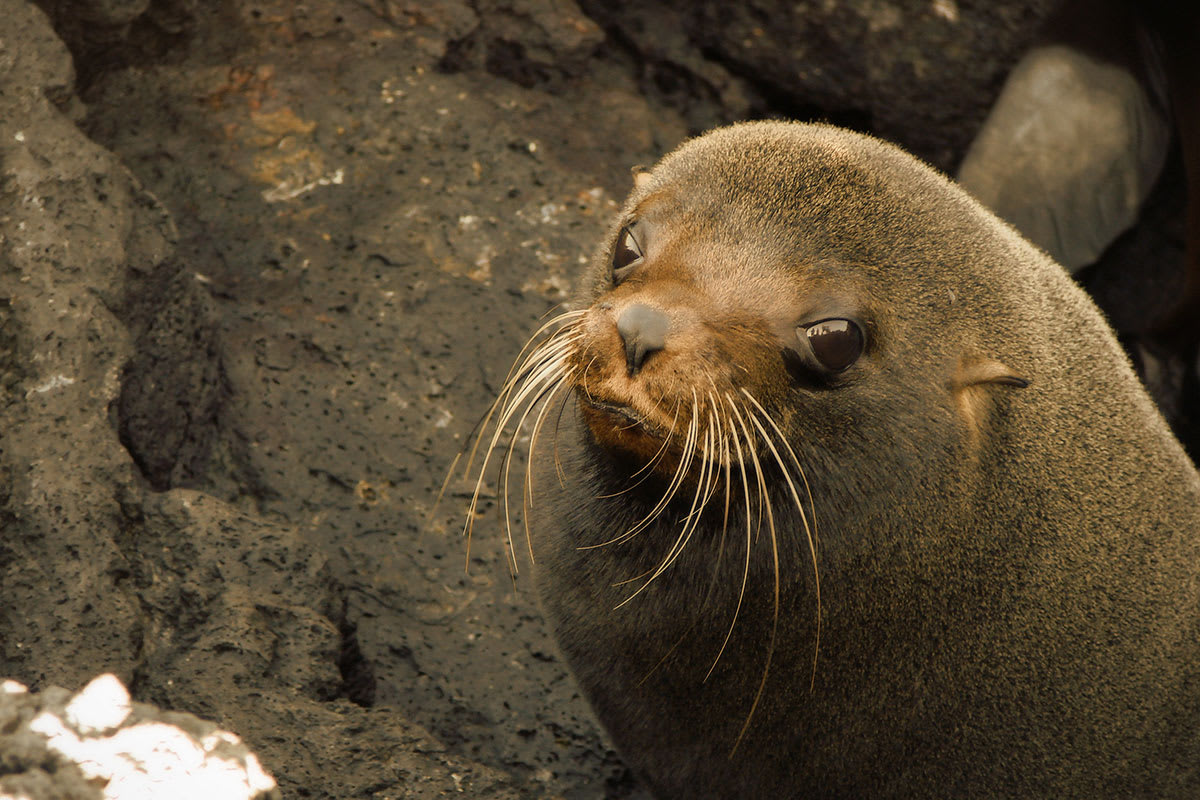
Disembarkation
AM: After breakfast, enjoy the visit to Black Turtle Cove, which is located on the north shore of Santa Cruz. It is a living illustration of how mangroves alter the marine environment to create a rich and unique habitat. Three mangrove species crowd the area from the shore out into the lagoon, which reaches almost a mile inland.
As you drift through quiet waters in the zodiac, you are likely to see spotted eagle rays and diamond shaped mustard rays, which swim in a diamond formation. White-tipped reef sharks slip beneath the boat and Pacific green sea turtles come to the surface for air and to mate. Waterfowl, including pelicans, herons and egret, all feed in the cove. This is a peaceful place that will make you feel calm.
Your cruise has officially come to an end. We hope you enjoyed your Galapagos Cruise! We will now transfer you to your scheduled departure from Baltra Airport to mainland Ecuador.

Embarkation
AM: Assistance will be provided upon your arrival by a Petrel representative after passing through immigration and baggage claim. When ready, you will be transferred to the yacht. You will then be shown to your cabin where you will have some time to settle in before the welcome briefing and lunch.
PM: The island was named after English nobleman Lord Hugh Seymour. Formed by uplifted submarine lava, the island is home to a huge colony of about 2,500 land iguanas and large populations of sea lions, blue-footed boobies, common noddies and frigatebirds. Along the coast it is possible to see land and marine iguanas and the biggest colony of Magnificent Frigatebirds.
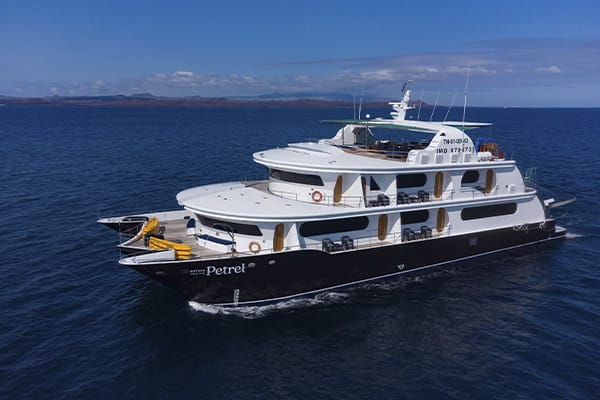
Vicente Roca & Espinosa Point
AM: On Vicente Roca Point the geological formations are simply outstanding and it is a great place to view various bird species such as blue-footed boobies, Nazca boobies, gulls, storm petrels, and brown noddy terns. Activities here are all done on the water by either dinghy or panga, or snorkeling. On this western part of the island the Cromwell Current provides cold water and many nutrients. Due to this it is possible to see various feeding frenzies of an assortment of animals such as whales, dolphins, sea lions, and marine birds diving. At times it may also be likely to see fur seals.
PM: No foreign species have ever invaded Fernandina Island and therefore it is one of the world’s most pristine island ecosystems. It is one of the most active islands and is the westernmost island in the archipelago. The volcano “La Cumbre” dominates the landscape with lava fields reaching the ocean. The Cromwell Current also flows on the west making the cold and nutrient rich water an ideal habitat for the Galapagos Penguin and Flightless Cormorant that nests here.
Espinosa Point area on Fernandina also provides a great opportunity to see the Galapagos Hawk. Land iguanas are found on the inner parts of the island near the volcanoes caldera and marine iguanas will nest on the coast during certain times of the year. There is only one visitor site to Fernandina which may involve a hike or snorkeling opportunity, making the rest of the island unspoiled in a most natural state.
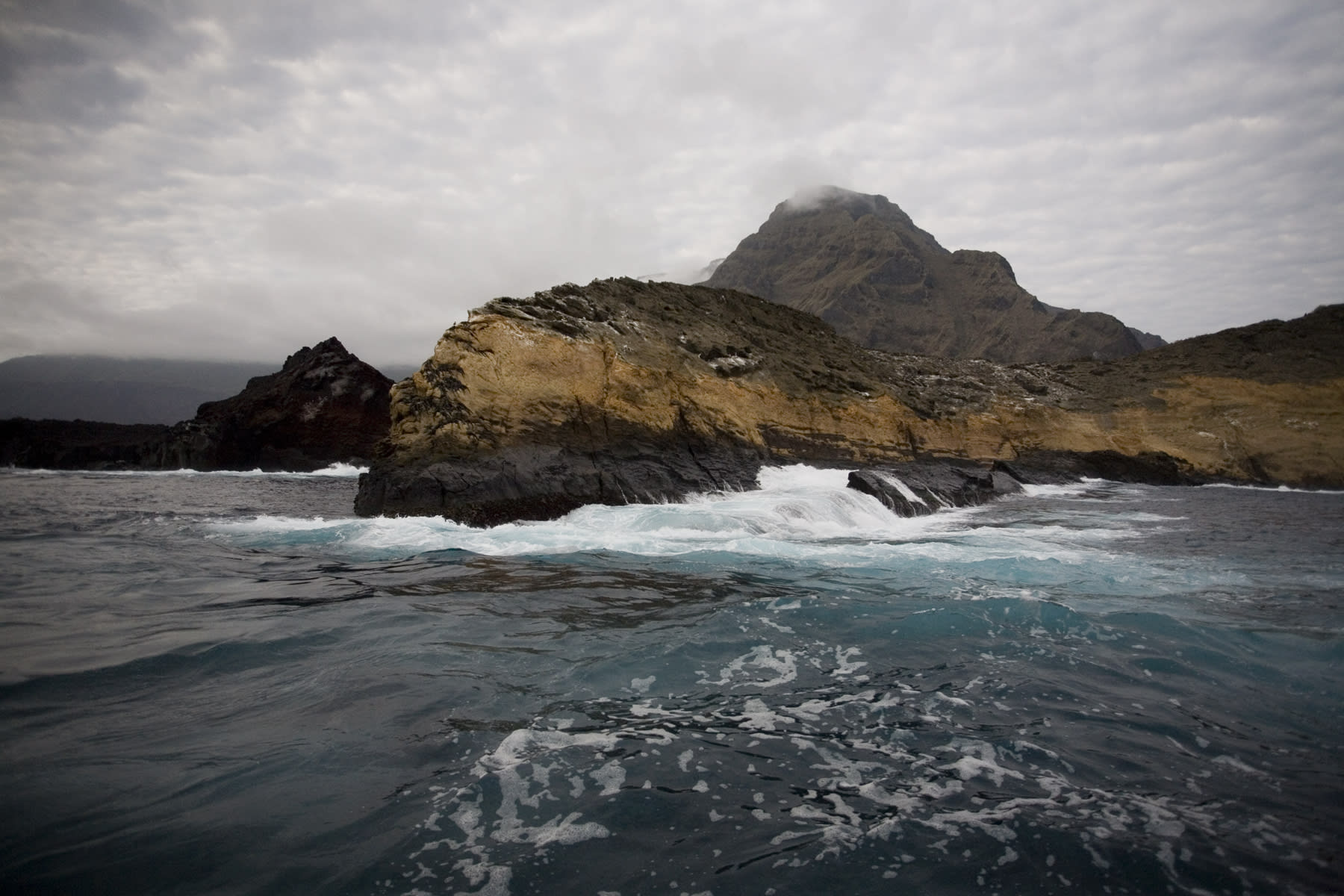
Tagus Cove & Urbina Bay
AM: This visitor site is located on the upper west part of the island and was named after and English war ship that used to pass the islands in the 1800’s. This was a famous spot for many pirates and sailors who have even left their names and the names of the ship inscribed on volcanic rock. There are many different characteristics of the island here from various volcanic activities such as large volcanic rocks or small little balls of petrified rain. On the hike the path leads to Darwin Lake with a tuff cone.
PM: A bit more south of Tagus Cove is Urbina Bay. Urbina Bay is an interesting site due to the uplifts of the island caused by volcanic and tectonic activity. When it rose, so did the corals and reefs that were under the surface.
You can still see them although they are beginning to deteriorate due to air exposure. There are chances of seeing giant tortoises, land iguanas, and more flightless cormorants near the coast.
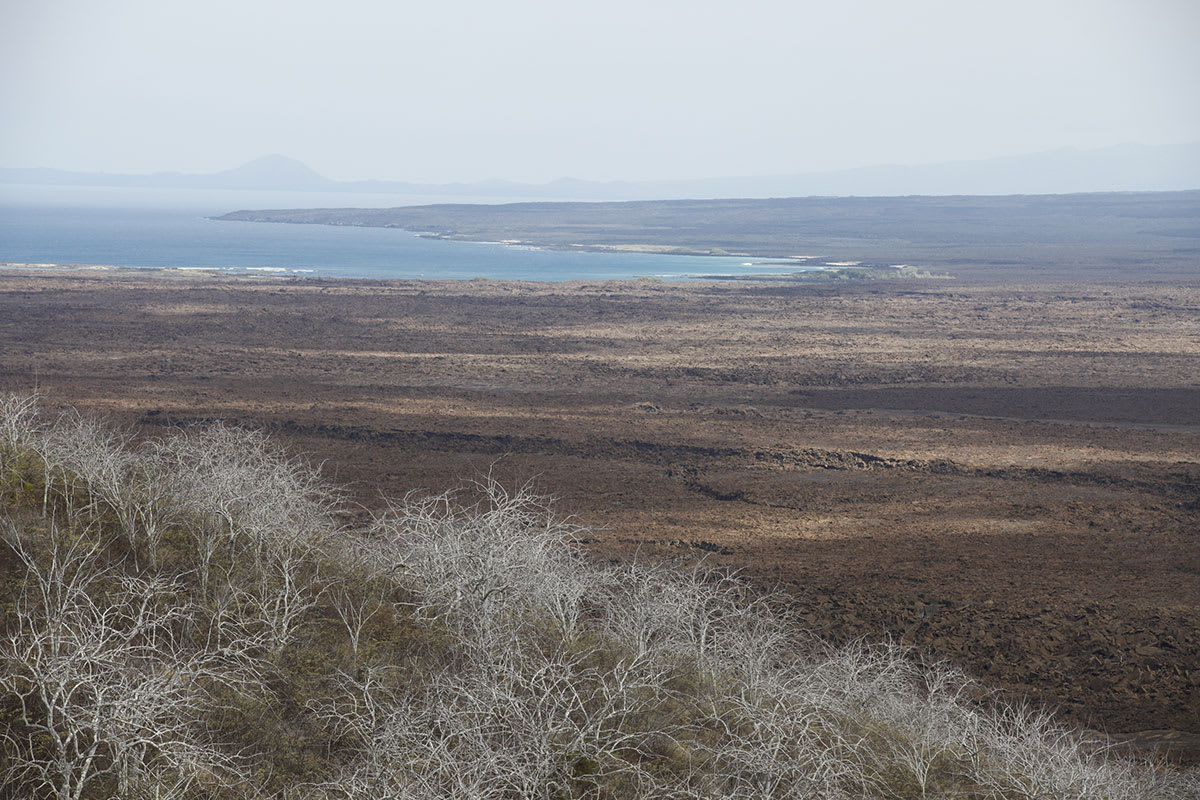
Elizabeth Bay & Moreno Point
AM: A visitor site on the way down to the southern parts of Isabela Island is Elizabeth Bay. There are a series of islets, a lagoon and mangroves surrounding it. The mangroves provide a great place to observe many birds and at the lagoon it is possible to see sea turtles resting and feeding.
PM: On the South Western point of Isabela Island is Moreno Point. With striking black geological features, it is home to endemic species known only to the barren lava flows found here. Various activities are possible such as a hike, a panga ride to better see various sea birds, geological features, and snorkelling to view the vibrant underwater life.
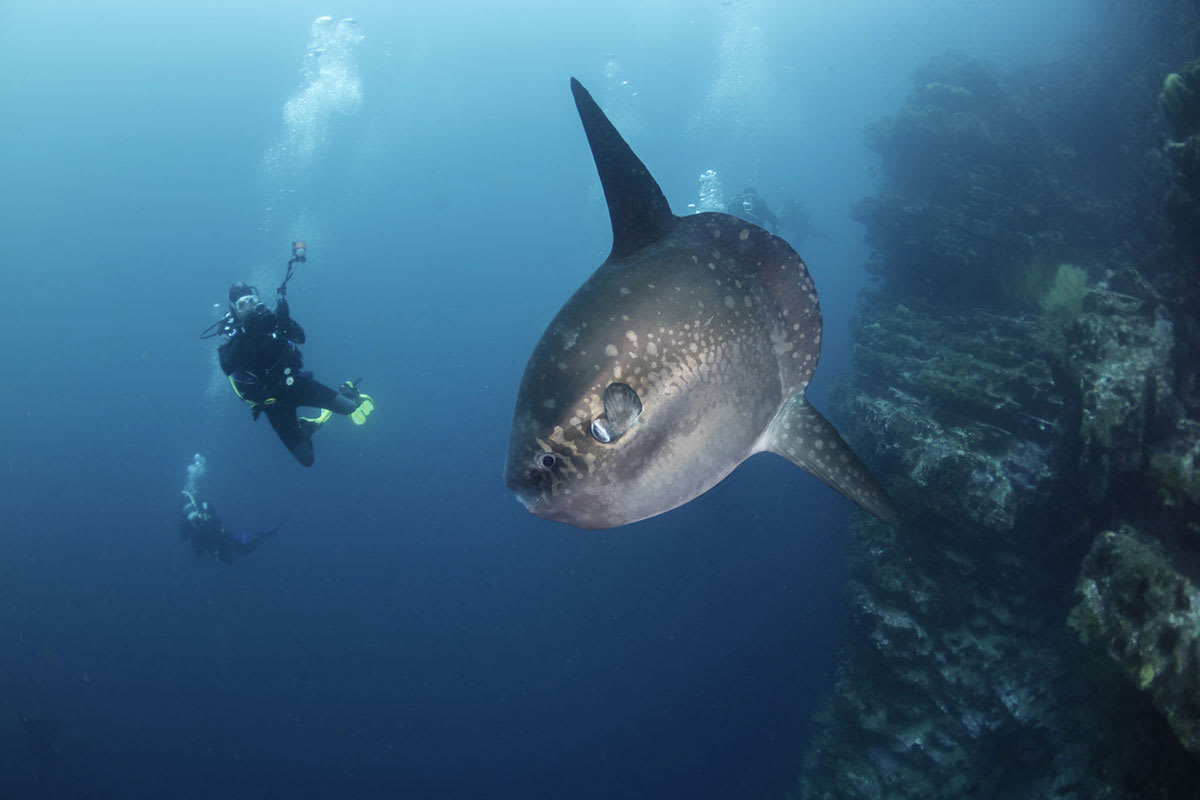
Sierra Negra Volcano & Arnaldo Tupiza Breeding Center + Wetlands
AM: Sierra Negra is located on the South of the Island and are two of the oldest of all Isabela’s volcanoes. A hike will show different types of vegetation and geological zones and possibly inside the caldera where petrified lava is present.
PM: The Arnaldo Tupiza Breeding Center, where two species of giant tortoise are bred to increase the population of these incredible animals, plays an essential role in protecting the future of the Galapagos. As you walk around the Centre you will also be able to enjoy the beautiful gardens that boast of a wide variety of native plants. Just outside Puerto Villamil you can also take a walk around the Isabela wetlands, comprised of lagoons, swamps and mangroves, which have become a paradise for migratory birds such as stilts and flamingos.
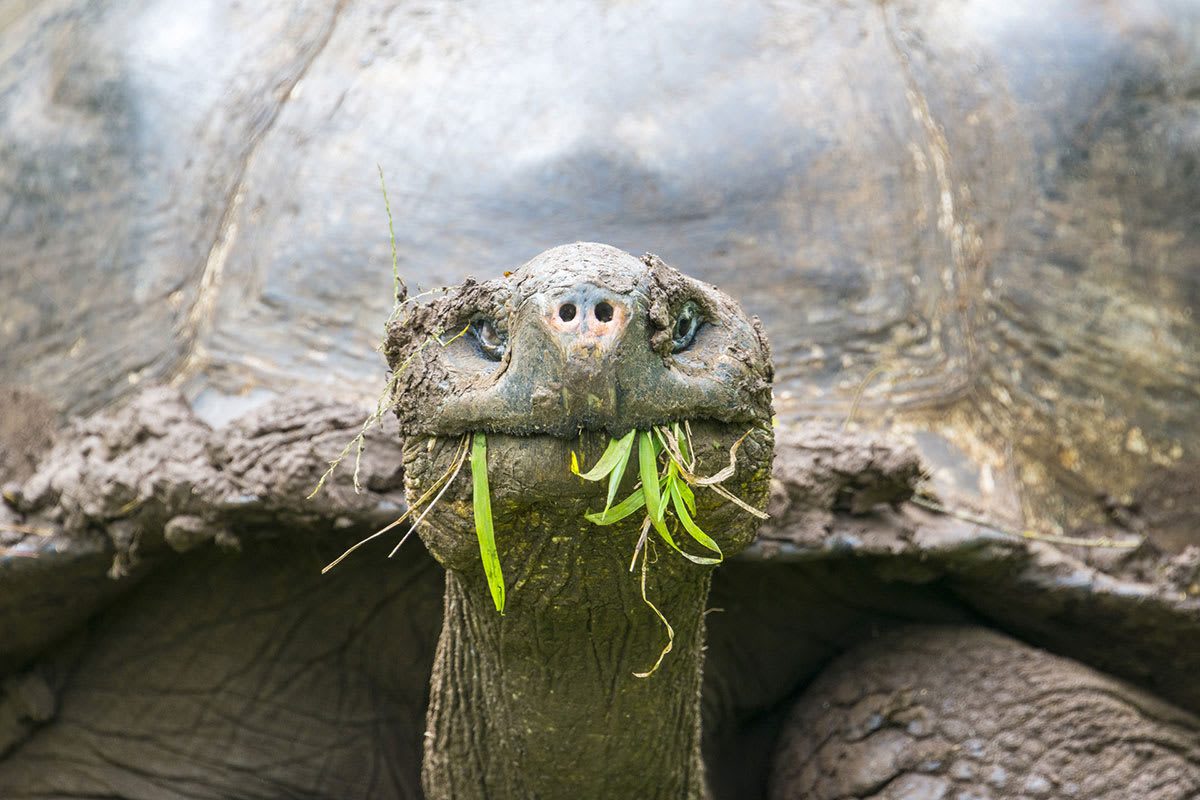
Disembarkation
AM: Today Santa Cruz is one of the most popular tourist sites. With a population of about 12,000 Galapagos natives, it has the longest paved road in the entire archipelago. One of the biggest conservation efforts is to eliminate all non-native plants and animals that are destroying native and endemic species on the island. There is no longer any volcanic activity but that does not mean there is no evidence. Santa Cruz means holy cross, but its English name comes from the British vessel – Indefatigable.
Charles Darwin Research Station conducts many different research projects and provides assistance to other researchers and governmental institutions and agencies, especially the Galapagos National Park. Many of the results are later published online, in magazines, and popular scientific journals. The research station also plays a big part in educating the community and public schools in Galapagos. There is also the longtime running Giant Tortoise restoration program that includes various stages of the giant tortoise from eggs, hatchlings and adults.
Your cruise has officially come to an end. We hope you enjoyed your Galapagos Cruise! We will now transfer you to your scheduled departure from Baltra Airport to mainland Ecuador. Safe travels!
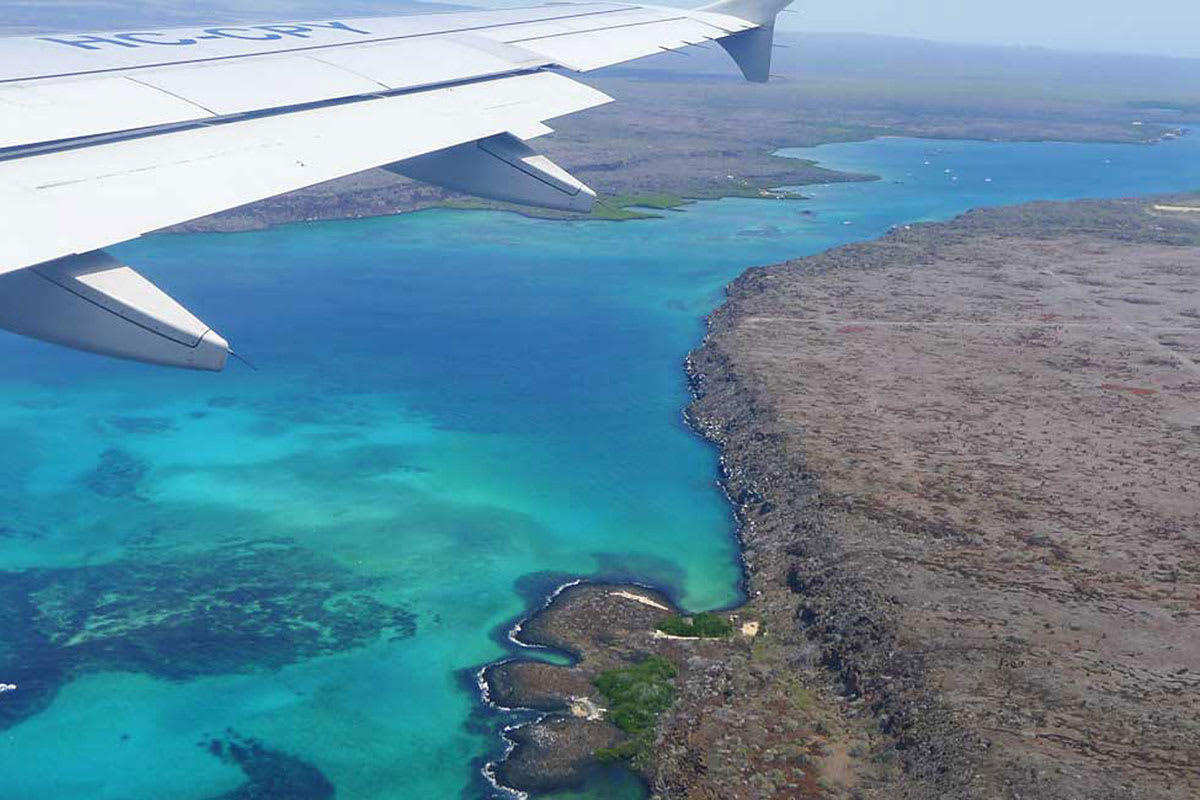
Embarkation
AM: A Petrel representative will provide assistance upon arrival after passing through immigration and baggage claim. When ready, you will be transferred to the yacht. You will then be shown to your cabin where you will have some time to settle in before the welcome briefing and lunch.
PM: As part of your day, we will head towards the Highlands of Santa Cruz to visit the Twin Craters or Gemelos, meaning twins in Spanish, are two caved in magma chambers of a previous volcano. After years of erosion and extinction, the once full chambers caved in leaving two similar craters that can be seen on a short hike that passes by a Scalesia forest.
Then, be prepared to admire the famous giant tortoises in the wild. It is impressive to see these endemic animals that give the name to the archipelago, Galapagos. Birdwatching is also one of the activities in the highlands, since this area is home of finches and other Galapagos birds. Finally, we walk into lava caves to see the enormous lava flows that formed the islands before continuing back to the M/C Petrel.
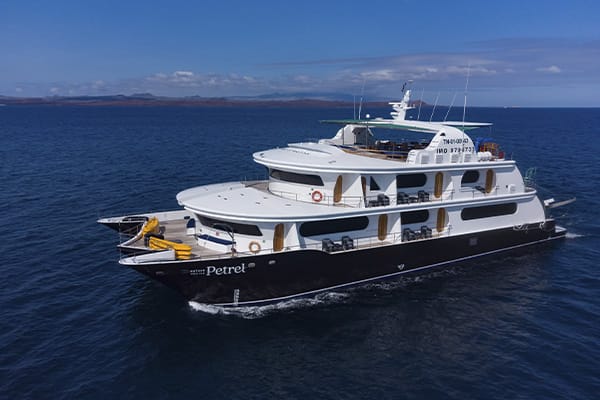
South Plaza Island & Santa Fe Island
AM: South Plaza is one of the smallest islands with a visitor site, but is home to an incredible amount of diverse flora and fauna. It has a large population of Sesuvium plants like the prickly pear cactus tree that is an important source of food for the land iguana. Just a few years ago mice were finally eradicated from the island, helping the population of land iguanas grow healthily once more.
PM: Santa Fe Island is home to the unique Santa Fe land iguana and is the only place to find Opuntia cactus. Giant tortoises were once native to this island but after the many years of pirates and buccaneers visiting the island and taking the tortoises aboard as food, they became extinct. The Island is also called Barrington Island, named after British Admiral Samuel Barrington. Large numbers of sea lions can be found on the landing beach and Galapagos hawks can also sometimes be seen.
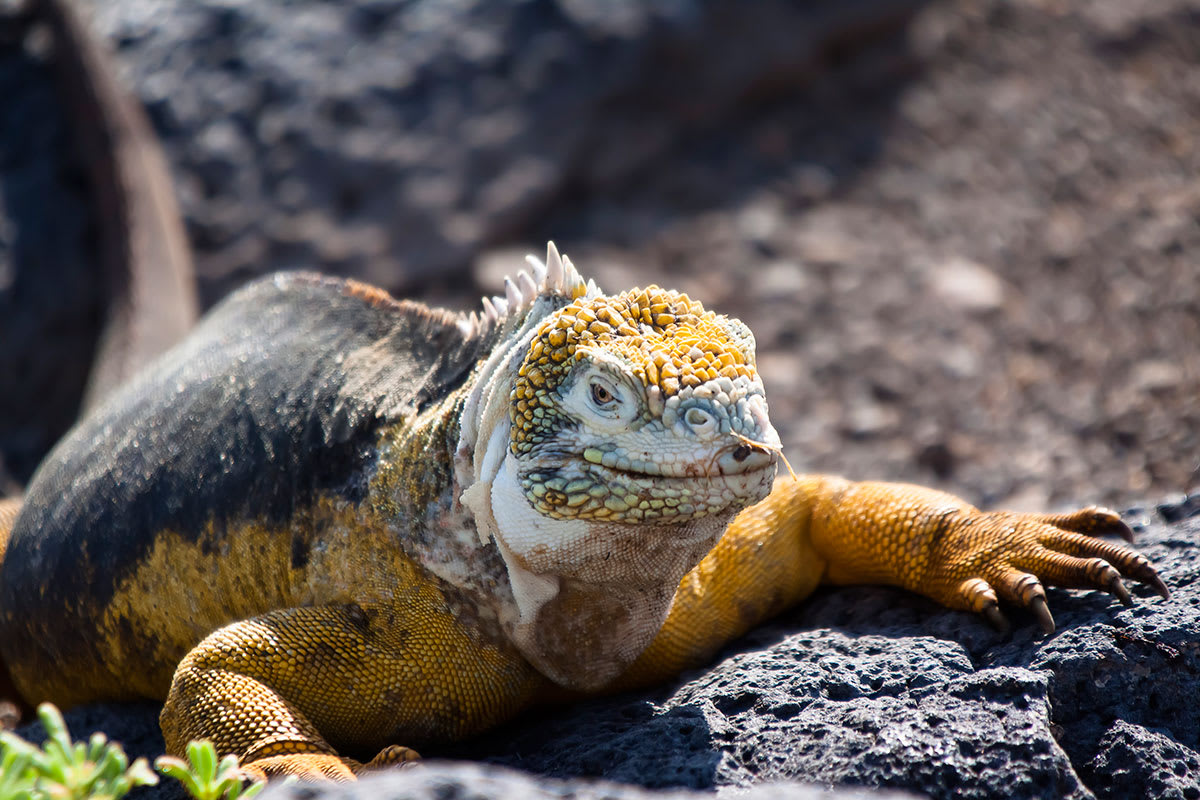
Lobos Island & Tortoise Breeding Center
AM: San Cristobal Island is the fifth largest island in the Galapagos and lies farthest East. It is where Darwin first landed back in 1835 and where the first permanent settlements were founded. Today the main port Puerto Baquerizo Moreno is the capital of Galapagos and houses many government offices, the Ecuadorian Navy, and an airport with daily flights to the mainland of Ecuador. Conservation challenges the island faces include invasive plants like blackberry and guayaba and insects like the blackfly.
Lobos Island is an islet about an hour away from San Cristobal. Blue-footed boobies will nest here seasonally. In recent years frigate birds have begun to nest here. Sea lions are abundant, as well as marine iguanas. It is a very calm and tranquil site with beautiful views, including Kicker Rock off in the distance.
PM: This is the fifth largest island in the Galapagos and lies farthest East. It is where Darwin first landed back in 1835 and where the first permanent settlements were founded. Today the main port Puerto Baquerizo Moreno is the capital of the Galapagos province and houses many government offices, the Ecuadorian Navy, and an airport with daily flights to the mainland of Ecuador. Conservation challenges the island faces include invasive plants like blackberry and guayaba and insects like the blackfly.
A visit to the David Rodriguez Breeding Center provides information about the origin and evolution of the giant tortoise and explains why the center is so vital in safeguarding the future of these incredible creatures.
Walking through the trails of the reserve, you can see baby tortoises being reared in semi-natural conditions - a brilliant demonstration of the commitment the local people have to preserving the wildlife that makes the Galapagos so special.

Gardner Bay, Osborne Islet, Gardner Islet & Suarez Point
AM: Here lies the southernmost island in the Galapagos, as well as the oldest. It is estimated to be about four million years old. Because it is so far away from the other islands it has the most endemic species. It is a wonderful opportunity for some great photography of endemic bird species that are found only on Espanola and awesome landscapes created by millions of years of erosion.
Gardner Bay/Osborn Islet/Gardner Islet: Visit one of the best beaches in the Galapagos. The white sandy beach is home to a large colony of friendly and playful sea lions. Three different types of finches can be seen. The Espanola Mockingbird is very friendly, but probably looking for food. At one point in time, tourists must have given it water or food, which taught them bad habits. The site is also where green sea turtles will come to nest their eggs between January and March.
PM: This is a phenomenal site where you will get to see many of Espanola Island’s endemic species. The trail will pass by the only Waved Albatross breeding site. If you are lucky, you might see a young albatross, take off for its first flight for up to five years at sea. Older birds stay at sea for months at a time, only coming back to breed. They have the same mate for life and will meet each other each year, only here to reproduce.
Other species that can be seen are marine iguanas that stay brightly colored year-round, Galapagos doves, Nazca boobies, blue-footed boobies, swallow-tailed gulls, red-billed tropic birds, and Darwin finches.
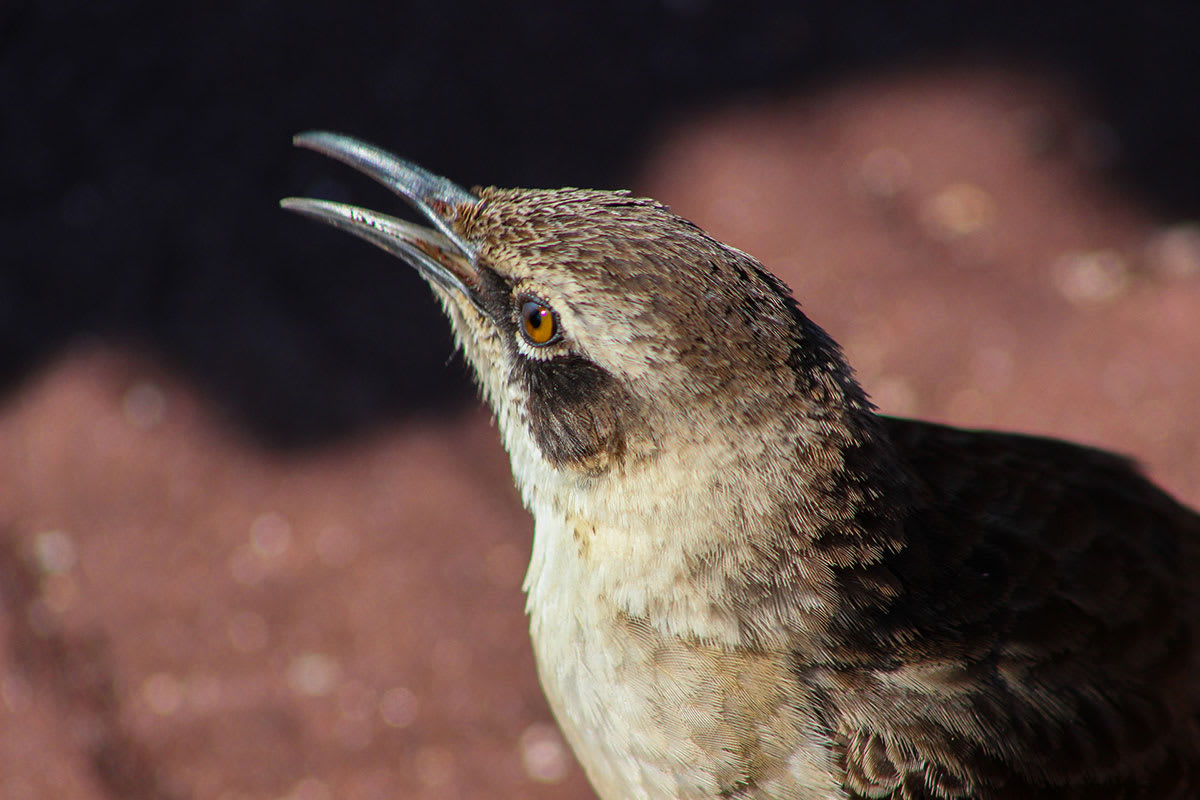
Devil's Crown & Post Office Bay
AM: This Island is one of the most interesting when it comes to human history. The first Galapagos resident was an Irishman who lived on Floreana from 1807 to 1809. It is the site of the first post office within the islands created by whalers in the 1700’s. Later it became the first island to be colonized by Ecuadorians, but to this day is still very isolated. Surrounded by mystery, in the 1930’s various disappearances occurred and is thought to be because of tension between a baroness and her three servants who arrived after an already settled husband and wife, who gave birth to the first to be born in Galapagos and another couple of a doctor and female companion who lived of the land from their garden. The small population of today lives off the land with home grown farms and gets their water from rain filled ponds during the rainy season. There is one hotel with the only phone in the port of Velasco Ibarra where most residents live, the rest live up in the highlands. Transportation is limited and is only available every two weeks.
Devil’s Crown is a visitor site that boasts the best snorkeling opportunities. Below the surface are amazing volcanic structures that have submerged over time. Hundreds of different colorful fish species can be found here among the coral reefs. Sharks, rays, sea turtles, hammer head sharks and sea lions are also common visitors. It is an underwater spectacle that cannot be missed.
PM: A completely human influential site, Post Office Bay is the first official post office created by passing whalers in the 1700’s. To this day visitors continue the tradition as many leave addressed messages on post cards in the barrel to be sent by future visitors while picking up post cards left behind by previous visitors to send when they return home. It is a fun exchangeable activity many visitors enjoy.
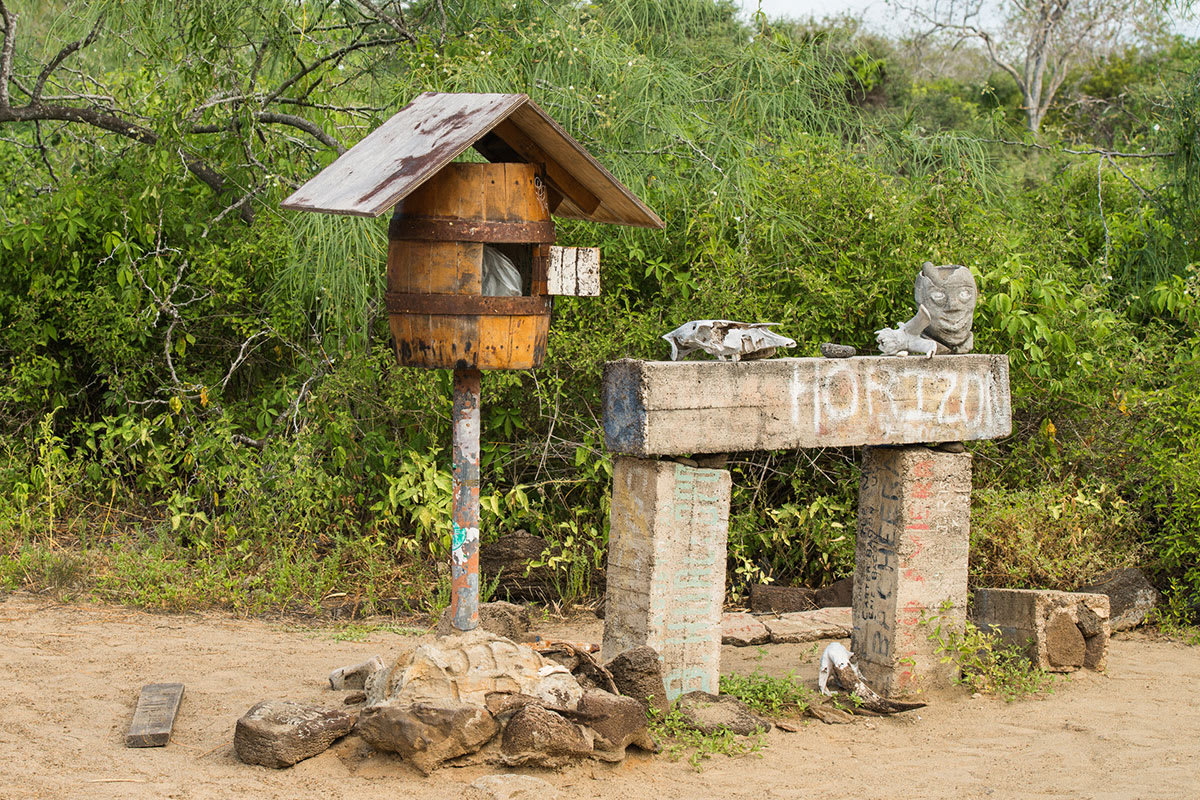
Disembarkation
AM: Today Santa Cruz is one of the most popular tourist sites. With a population of about 12,000 Galapagos natives, it has the longest paved road in the entire archipelago. One of the biggest conservation efforts is to eliminate all non-native plants and animals that are destroying native and endemic species on the island. There is no longer any volcanic activity but that does not mean there is no evidence. Santa Cruz means holy cross, but its English name comes from the British vessel – Indefatigable.
The Charles Darwin Research Station conducts many different research projects and provides assistance to other researchers and governmental institutions and agencies, especially the Galapagos National Park. Many of the results are later published online, in magazines, and popular scientific journals. The research station also plays a big part in educating the community and public schools in Galapagos. There is also the longtime running Giant Tortoise restoration program that includes various stages of the giant tortoise from eggs, hatchlings and adults.
Your cruise has officially come to an end. We hope you enjoyed your Galapagos Cruise! We will now transfer you to your scheduled departure from Baltra Airport to mainland Ecuador. Safe travels!
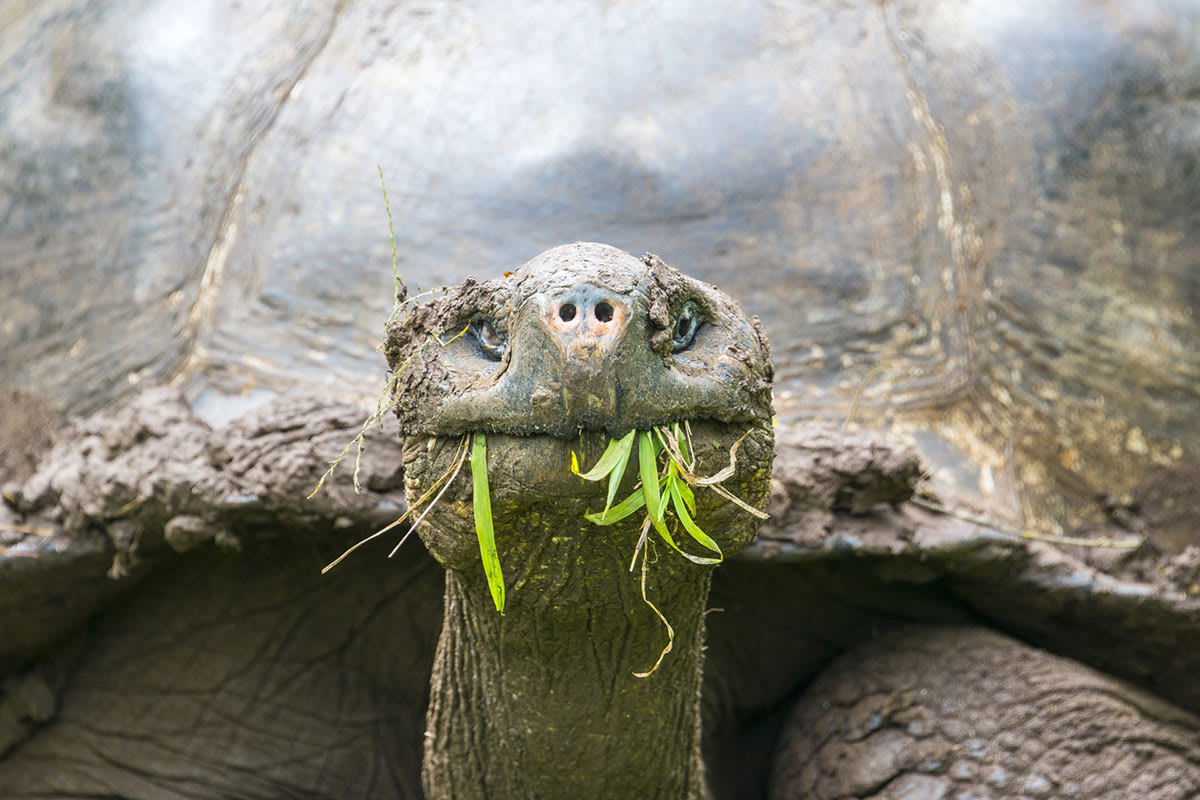
Embarkation
AM: A Petrel representative will provide assistance upon arrival after passing through immigration and baggage claim. When ready, you will be transferred to the yacht. You will then be shown to your cabin where you will have some time to settle in before the welcome briefing and lunch.
PM: The island was named after English nobleman Lord Hugh Seymour. Formed by uplifted submarine lava, the island is home to a huge colony of about 2,500 land iguanas and large populations of sea lions, blue-footed boobies, common noddies and frigatebirds. Along the coast it is possible to see land and marine iguanas and the biggest colony of Magnificent Frigatebirds.
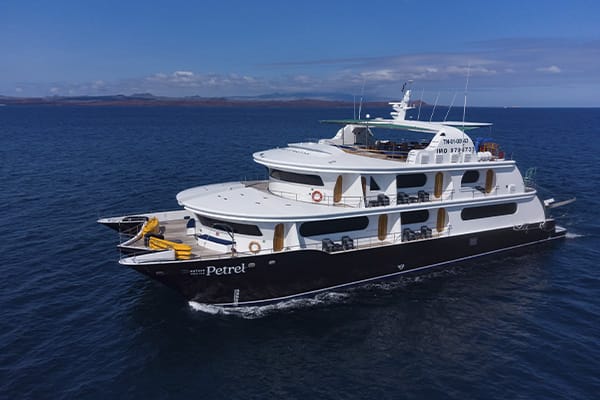
Vicente Roca & Espinosa Point
AM: On Vicente Roca Point the geological formations are simply outstanding and it is a great place to view various bird species such as blue-footed boobies, Nazca boobies, gulls, storm petrels, and brown noddy terns. Activities here are all done on the water by either dinghy or panga, or snorkeling. On this western part of the island the Cromwell Current provides cold water and many nutrients. Due to this it is possible to see various feeding frenzies of an assortment of animals such as whales, dolphins, sea lions, and marine birds diving. At times it may also be likely to see fur seals.
PM: No foreign species have ever invaded Fernandina Island and therefore it is one of the world’s most pristine island ecosystems. It is one of the most active islands and is the westernmost island in the archipelago. The volcano “La Cumbre” dominates the landscape with lava fields reaching the ocean. The Cromwell Current also flows on the west making the cold and nutrient rich water an ideal habitat for the Galapagos Penguin and Flightless Cormorant that nests here.
Espinosa Point area on Fernandina also provides a great opportunity to see the Galapagos Hawk. Land iguanas are found on the inner parts of the island near the volcanoes caldera and marine iguanas will nest on the coast during certain times of the year. There is only one visitor site to Fernandina which may involve a hike or snorkelling opportunity, making the rest of the island unspoiled in a most natural state.
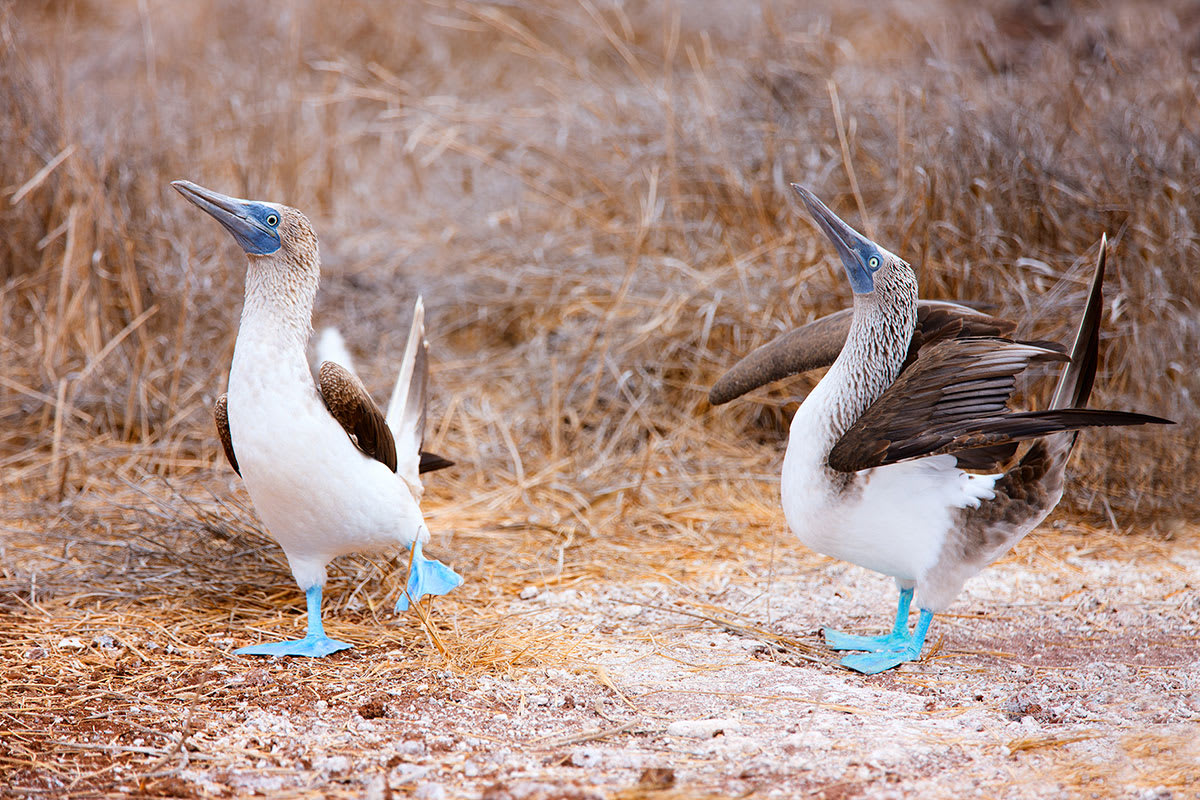
Tagus Cove & Urbina Bay
AM: This visitor site is located on the upper west part of the island and was named after and English war ship that used to pass the islands in the 1800’s. This was a famous spot for many pirates and sailors who have even left their names and the names of the ship inscribed on volcanic rock. There are many different characteristics of the island here from various volcanic activities such as large volcanic rocks or small little balls of petrified rain. On the hike the path leads to Darwin Lake with a tuff cone.
PM: A bit more south of Tagus Cove is Urbina Bay. Urbina Bay is an interesting site due to the uplifts of the island caused by volcanic and tectonic activity. When it rose, so did the corals and reefs that were under the surface. You can still see them although they are beginning to deteriorate due to air exposure. There are chances of seeing giant tortoises, land iguanas, and more flightless cormorants near the coast.
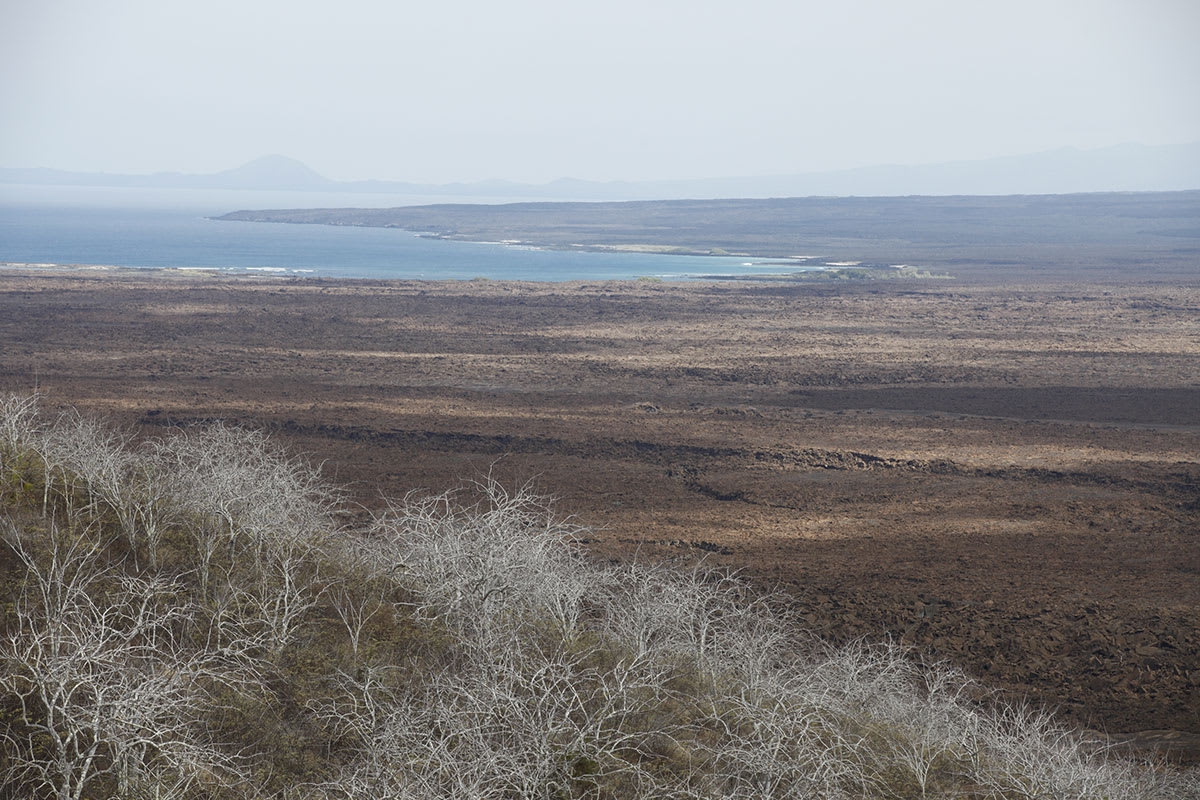
Elizabeth Bay & Moreno Point
AM: A visitor site on the way down to the southern parts of Isabela Island is Elizabeth Bay. There are a series of islets, a lagoon and mangroves surrounding it. The mangroves provide a great place to observe many birds and at the lagoon it is possible to see sea turtles resting and feeding.
PM: On the South Western point of Isabela Island is Moreno Point. With striking black geological features, it is home to endemic species known only to the barren lava flows found here. Various activities are possible such as a hike, a panga ride to better see various sea birds, geological features, and snorkelling to view the vibrant underwater life.
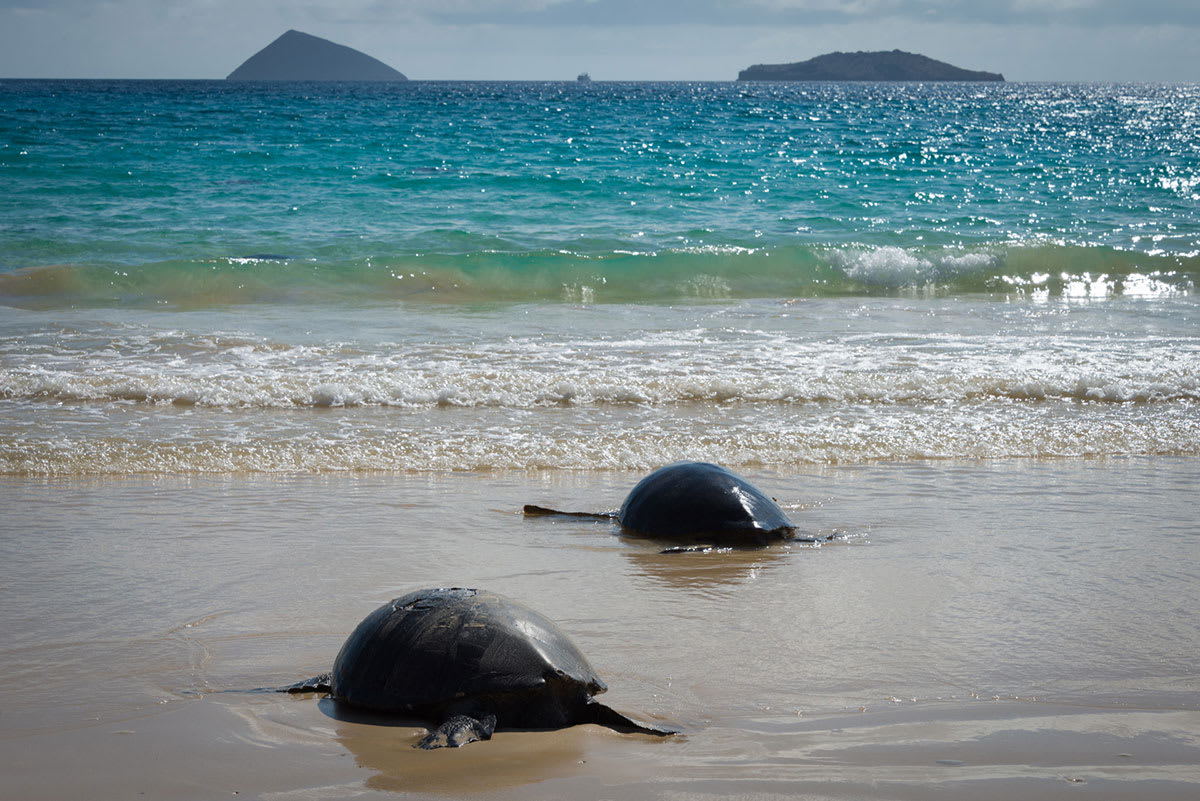
Sierra Negra Volcano & Arnaldo Tupiza Breeding Center + Wetlands
AM: Sierra Negra is located on the South of the Island and are two of the oldest of all Isabela’s volcanoes. A hike will show different types of vegetation and geological zones and possibly inside the caldera where petrified lava is present.
PM: The Arnaldo Tupiza Breeding Center, where two species of giant tortoise are bred to increase the population of these incredible animals, plays an essential role in protecting the future of the Galapagos.
As you walk around the Centre you will also be able to enjoy the beautiful gardens that boast of a wide variety of native plants.
Just outside Puerto Villamil you can also take a walk around the Isabela wetlands, comprised of lagoons, swamps and mangroves, which have become a paradise for migratory birds such as stilts and flamingos.
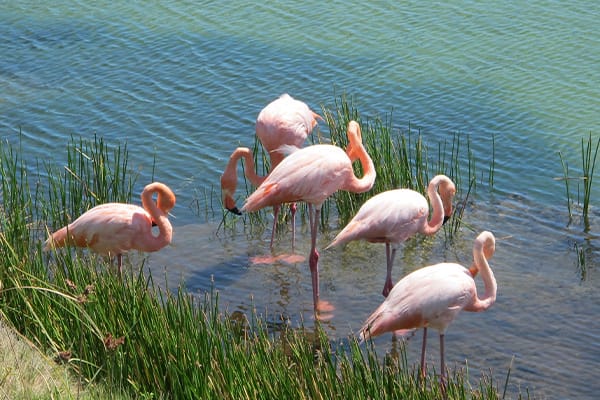
Charles Darwin Research Station & Highlands
AM: Today Santa Cruz is one of the most popular tourist sites. With a population of about 12,000 Galapagos natives, it has the longest paved road in the entire archipelago. One of the biggest conservation efforts is to eliminate all non-native plants and animals that are destroying native and endemic species on the island. There is no longer any volcanic activity but that does not mean there is no evidence. Santa Cruz means holy cross, but its English name comes from the British vessel – Indefatigable.
Charles Darwin Research Station conducts many different research projects and provides assistance to other researchers and governmental institutions and agencies, especially the Galapagos National Park. Many of the results are later published online, in magazines, and popular scientific journals. The research station also plays a big part in educating the community and public schools in Galapagos. There is also the longtime running Giant Tortoise restoration program that includes various stages of the giant tortoise from eggs, hatchlings and adults.
PM: As part of your day, we will head towards the Highlands of Santa Cruz to visit the Twin Craters or Gemelos, meaning twins in Spanish, are two caved in magma chambers of a previous volcano. After years of erosion and extinction, the once full chambers caved in leaving two similar craters that can be seen on a short hike that passes by a Scalesia forest.
Then, be prepared to admire the famous giant tortoises in the wild. It is impressive to see these endemic animals that give the name to the archipelago, Galapagos. Birdwatching is also one of the activities in the highlands, since this area is home of finches and other Galapagos birds. Finally, we walk into lava caves to see the enormous lava flows that formed the islands before continuing back to the M/C Petrel.
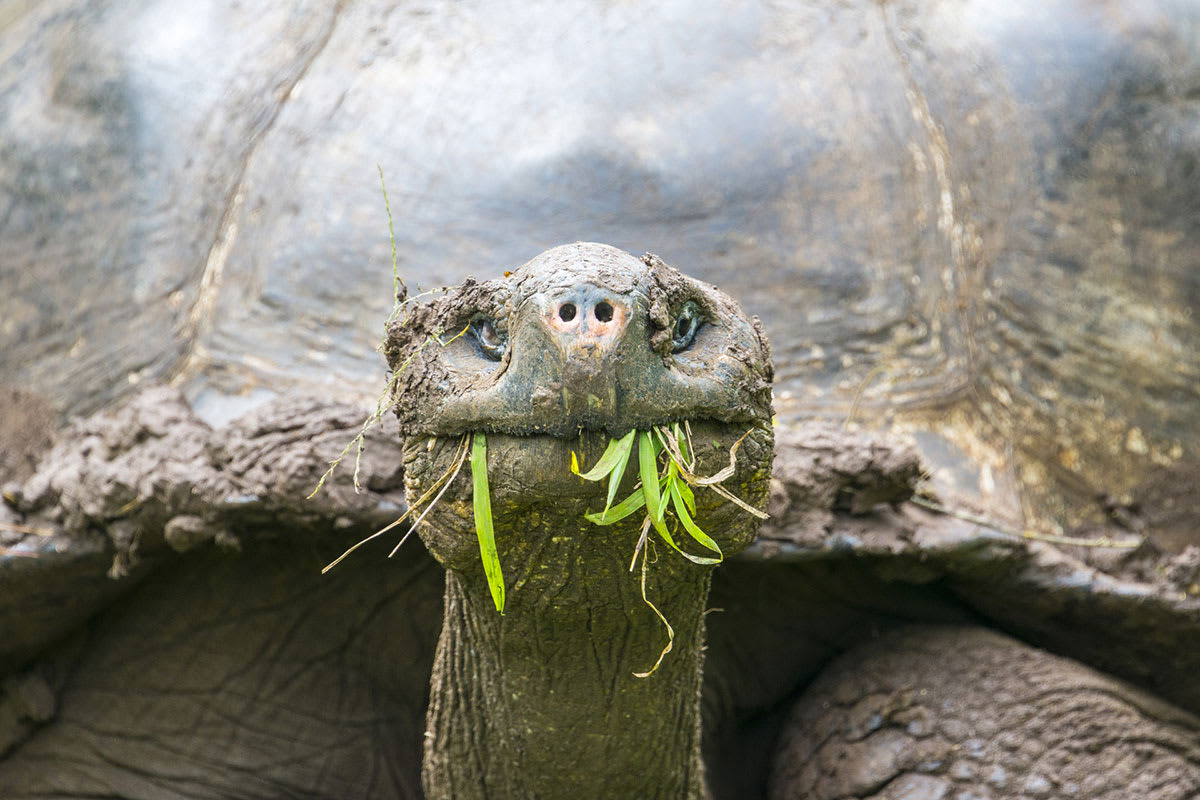
South Plaza Island & Santa Fe Island
AM: South Plaza is one of the smallest islands with a visitor site, but is home to an incredible amount of diverse flora and fauna. It has a large population of Sesuvium plants like the prickly pear cactus tree that is an important source of food for the land iguana. Just a few years ago mice were finally eradicated from the island, helping the population of land iguanas grow healthily once more.
PM: Santa Fe Island is home to the unique Santa Fe land iguana and is the only place to find Opuntia cactus. Giant tortoises were once native to this island but after the many years of pirates and buccaneers visiting the island and taking the tortoises aboard as food, they became extinct. The Island is also called Barrington Island, named after British Admiral Samuel Barrington. Large numbers of sea lions can be found on the landing beach and Galapagos hawks can also sometimes be seen.
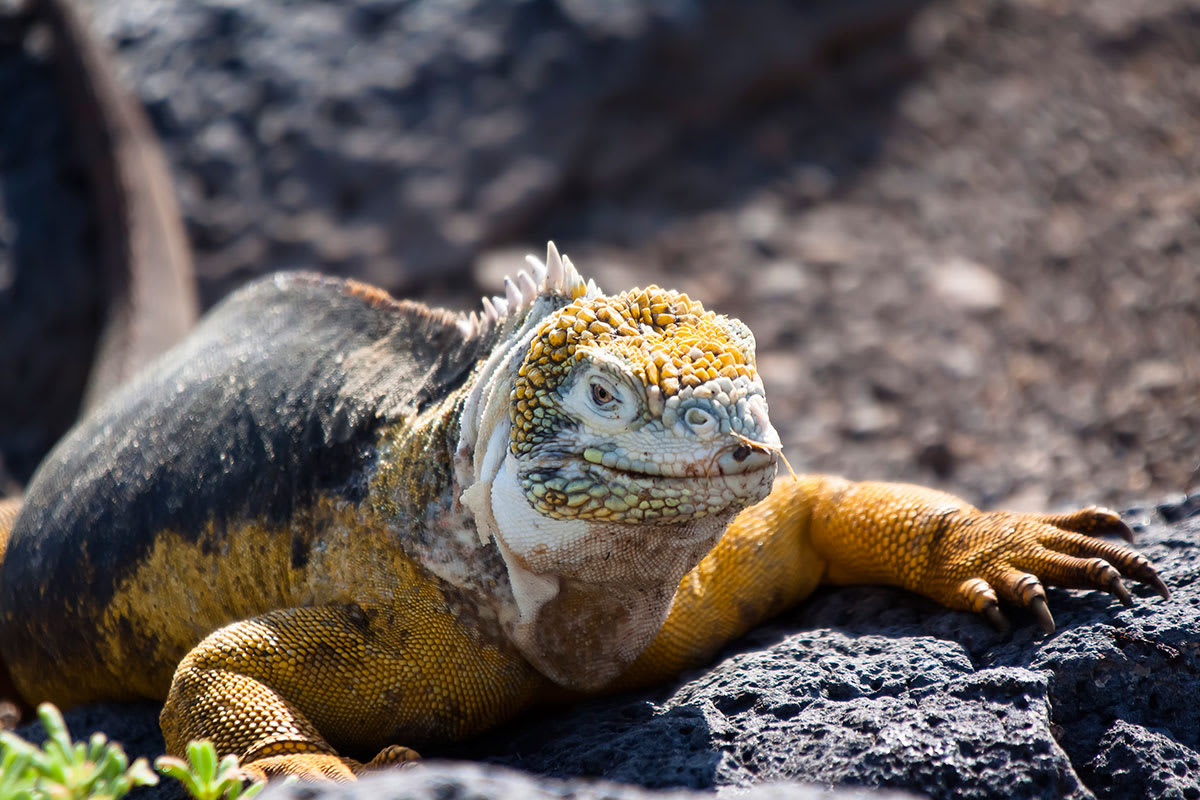
Disembarkation
AM: Lobos Island is an islet about an hour away from San Cristobal. Blue-footed boobies will nest here seasonally. In recent years frigate birds have begun to nest here. Sea lions are abundant, as well as marine iguanas. It is a very calm and tranquil site with beautiful views, including Kicker Rock off in the distance.
Your cruise has officially come to an end. We hope you enjoyed your Galapagos Cruise! We will now transfer you to your scheduled departure from San Cristobal Airport to mainland Ecuador. Safe travels!
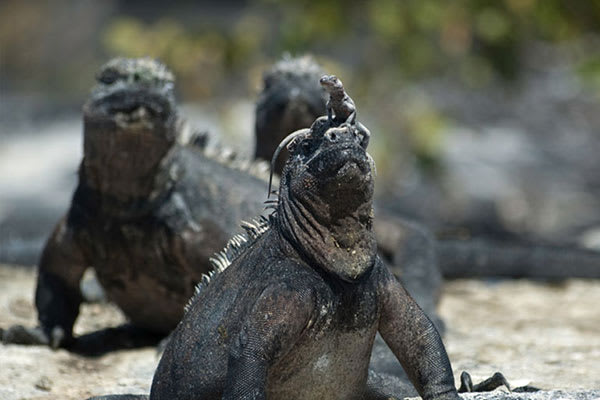
Embarkation
AM: Assistance will be provided upon your arrival by a Petrel representative after passing through immigration and baggage claim. When ready, you will be transferred to the yacht. You will then be shown to your cabin where you will have some time to settle in before the welcome briefing and lunch.
PM: A visit to the David Rodriguez Breeding Center provides information about the origin and evolution of the giant tortoise and explains why the center is so vital in safeguarding the future of these incredible creatures.
Walking through the trails of the reserve, you can see baby tortoises being reared in semi-natural conditions - a brilliant demonstration of the commitment the local people have to preserving the wildlife that makes the Galapagos so special.
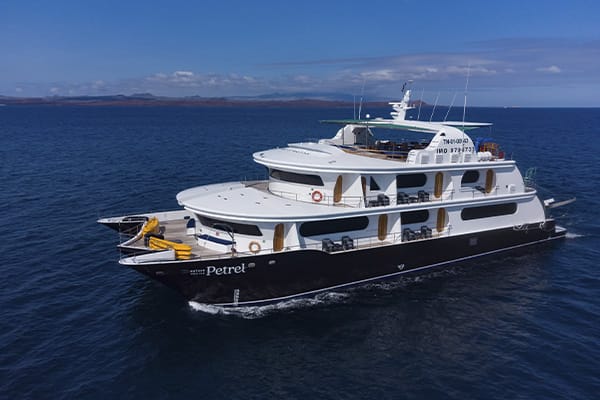
Gardner Bay, Osborn Islet, Gardner Islet & Suarez Point
AM: Gardner Bay/Osborn Islet/Gardner Islet: Visit one of the best beaches in the Galapagos. The white sandy beach is home to a large colony of friendly and playful sea lions. Three different types of finches can be seen. The Espanola Mockingbird is very friendly, but probably looking for food. At one point in time, tourists must have given it water or food, which taught them bad habits. The site is also where green sea turtles will come to nest their eggs between January and March.
PM: This is a phenomenal site where you will get to see many of Espanola Island’s endemic species. The trail will pass by the only Waved Albatross breeding site. If you are lucky, you might see a young albatross, take off for its first flight for up to five years at sea. Older birds stay at sea for months at a time, only coming back to breed. They have the same mate for life and will meet each other each year, only here to reproduce. Other species that can be seen are marine iguanas that stay brightly colored year-round, Galapagos doves, Nazca boobies, blue-footed boobies, swallow-tailed gulls, red-billed tropic birds, and Darwin finches.
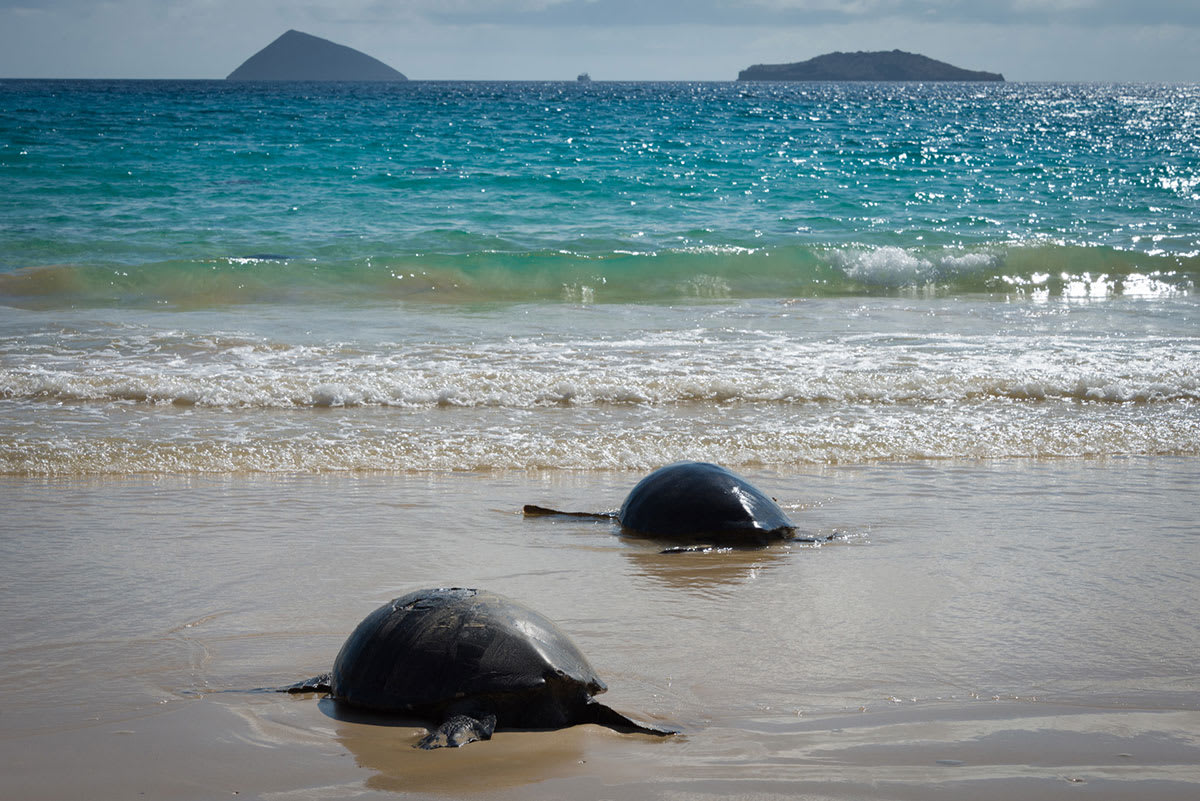
Devil’s Crown/Cormorant Point & Post Office Bay/Baroness Lookout Point
AM: Devil’s Crown is a visitor site that boasts the best snorkeling opportunities. Below the surface are amazing volcanic structures that have submerged over time. Hundreds of different colorful fish species can be found here among the coral reefs. Sharks, rays, sea turtles, hammer head sharks and sea lions are also common visitors. It is an underwater spectacle that cannot be missed.
OR
Another fun and interesting visitor site is Cormorant Point. Two beaches can be visited and flamingoes can be seen wading through brackish lagoons looking for shrimp, which gives them their bright and vibrant colors. One of the beaches look green because of olivine crystals and the other is appropriately called Flour Beach a powdery white, made from fine pulverized coral.
PM: A completely human-influential site, Post Office Bay is the first official post office created by passing whalers in the 1700’s. To this day visitors continue the tradition as many leave addressed messages on post cards in the barrel to be sent by future visitors while picking up post cards left behind by previous visitors to send when they return home. It is a fun exchangeable activity many visitors enjoy.
OR
On the northern part of the island, Baroness Lookout Point has a beautiful landscape and historic view. It was named after the supposed Austrian Baroness that was the subject of many mysterious disappearances and well-known stories of loathing by those on Floreana.
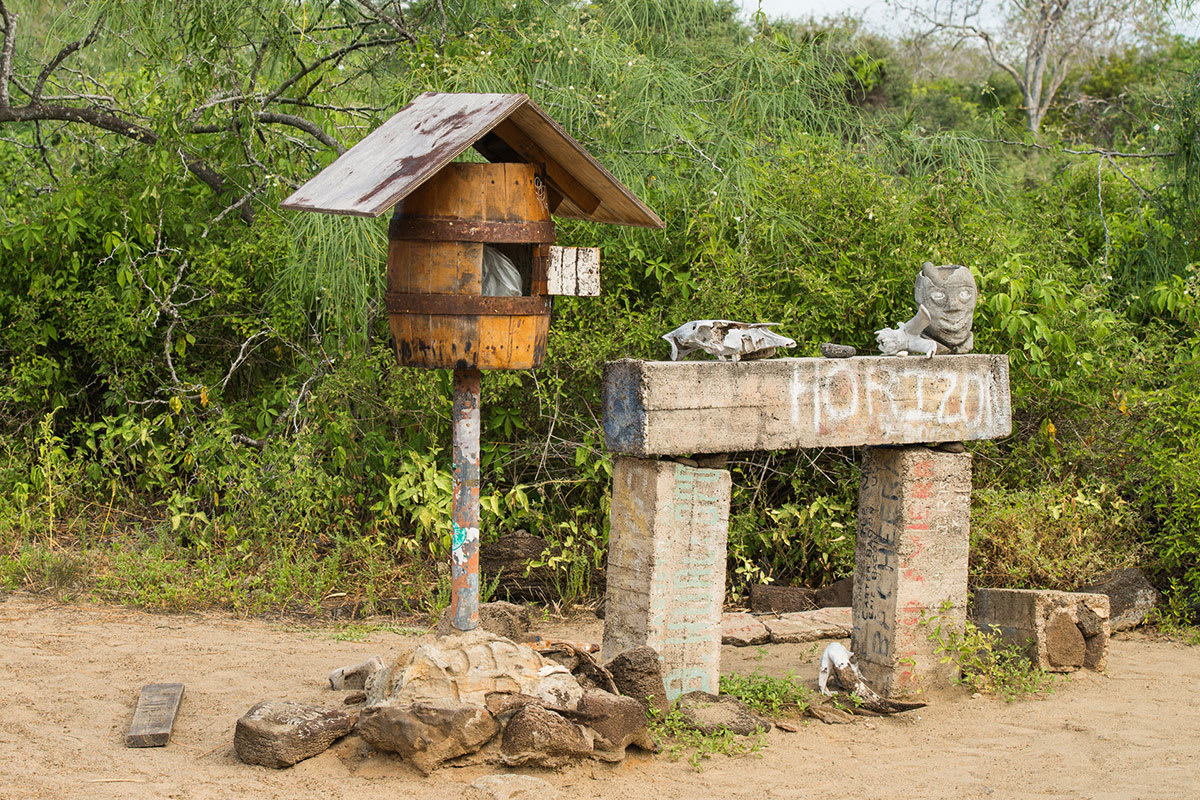
Charles Darwin Research Station & Highlands
AM: The Charles Darwin Research Station conducts many different research projects and provides assistance to other researchers and governmental institutions and agencies, especially the Galapagos National Park. Many of the results are later published online, in magazines, and popular scientific journals. The research station also plays a big part in educating the community and public schools in Galapagos. There is also the longtime running Giant Tortoise restoration program that includes various stages of the giant tortoise from eggs, hatchlings and adults.
PM: The Highlands of Santa Cruz is a very interesting site due to the rich wildlife, hills, ferns, volcanoes and lava tubes present. Exploring the lava tubes is a surreal and unique experience. Here you can see all the different agricultural zones that are present in the Galapagos in one place. The variety of birds makes this a bird watchers delight.
Be prepared to admire the famous giant tortoises in the wild. It is impressive to see these endemic animals that give the name to the archipelago, Galapagos. Birdwatching is also one of the activities in the highlands, since this area is home of finches and other Galapagos birds. Finally, we walk into lava caves to see the enormous lava flows that formed the islands before continuing back to the M/C Petrel.
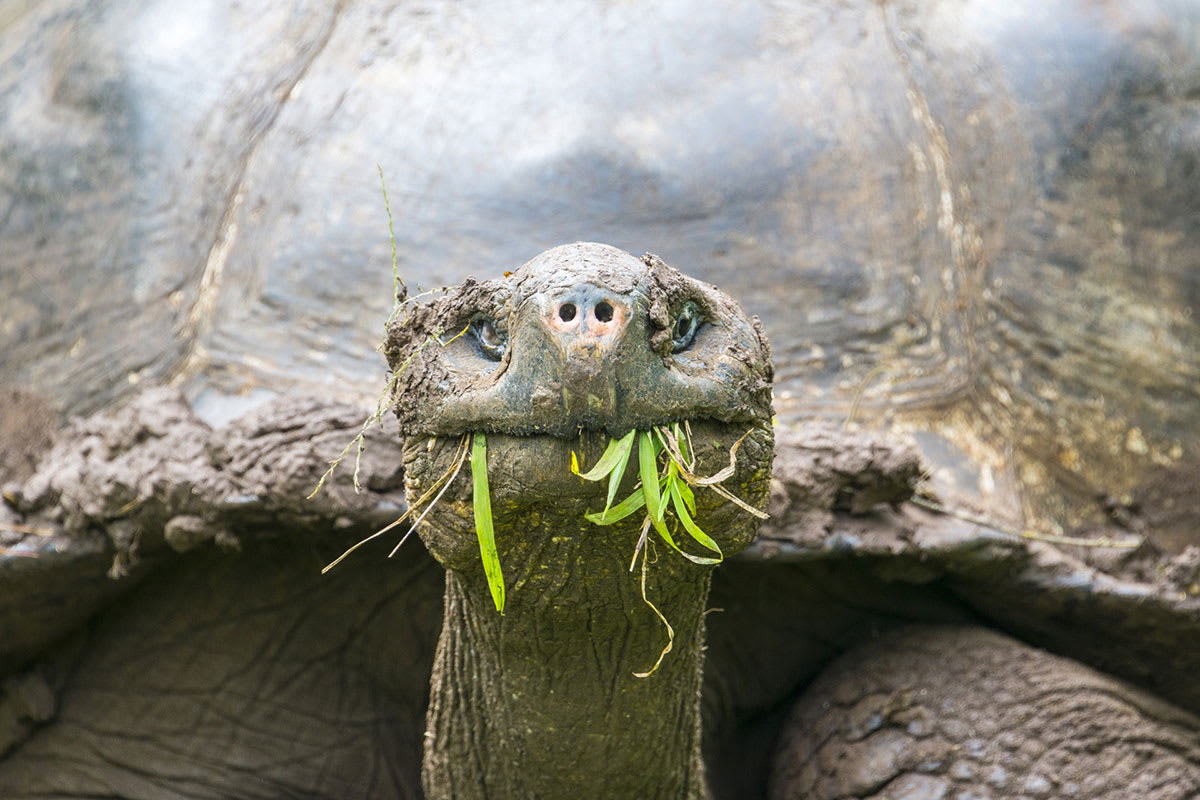
Sullivan Bay & Pinnacle Rock
AM: Sullivan Bay is a satellite island of Santiago. This is one of the best places to see the Galapagos fur seal. There is not much wildlife to see here, but the old lava formations are quite a site to see with tuff cones, pyroclastic cones, and other volcanic landscapes.
PM: Bartholomew is another satellite island that derives from Santiago Island. It is home of the famous Pinnacle Rock and is named after James Sullivan, a friend of Charles Darwin who was also aboard the HMS Beagle. Of all the islands, this is the most photographed and is also featured in the 2003 movie “Master and Commander”.
Pinnacle rock is a volcano cone formed by magma expelled by an underwater volcano. The sea cooled the hot lava and as it exploded from contact, the pieces formed together this huge rock of many, many layers of basalt. The huge rock also has a beach where a small population of green sea turtles will nest. Galapagos penguins gather here and swimming can offer beautiful sights of colorful schools of fish and curious sea lions.
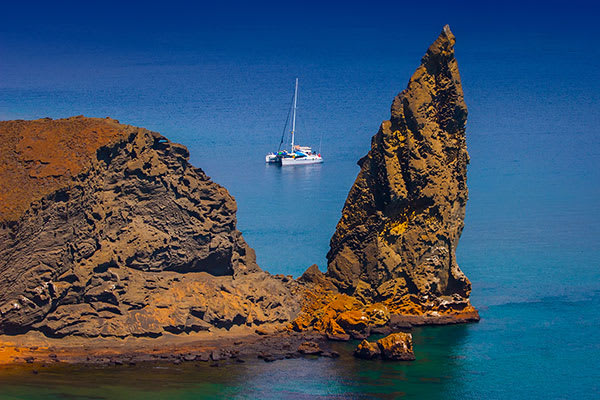
Darwin Bay & El Barranco
AM: Darwin Bay is the result of the shield volcano where one of the sides of the caldera collapsed after years of erosion. It is one of the places in the Galapagos where red-footed boobies can be guaranteed to be seen. Over 200,000 red-footed boobies are estimated to be living in the trees and bushes of Genovesa.
PM: Better known as Prince Phillip’s Steps, a steep and rocky path leads up to a cliff with a marvelous view. There is also a Palo Santo Forest that is home to nesting red-footed boobies and other birds.
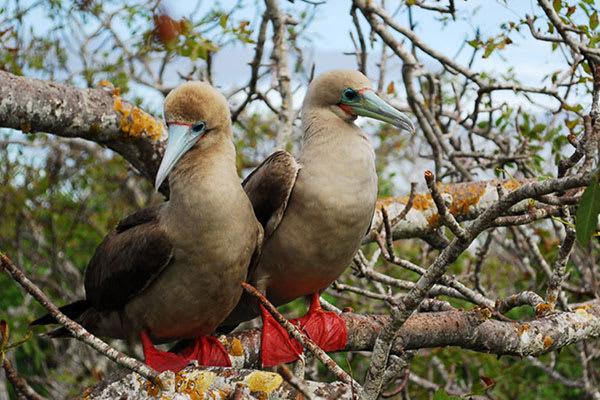
Egas Port & Buccaneer Cove /Espumilla Beach
AM: Egas port is also known as James Bay. It is home to quick footed Galapagos lava lizards, Galapagos fur seals along the grottos and tide pools and is a great snorkeling site.
PM: Buccaneer Cove: This cove is better known for excellent snorkeling opportunities and was once known as a refuge for British buccaneers or pirates. The underwater formations are amazing and many different species of fish gather here.
OR
We will visit Espumilla Beach where marine iguanas lounge and the Sally-Lightfoot crabs attract the hunting herons and perform the dance of predator and prey right before your eyes. Snorkeling is highly recommended as you could find yourself face to face with an octopus, moray eel, shark, or a variety of other species of tropical fish.
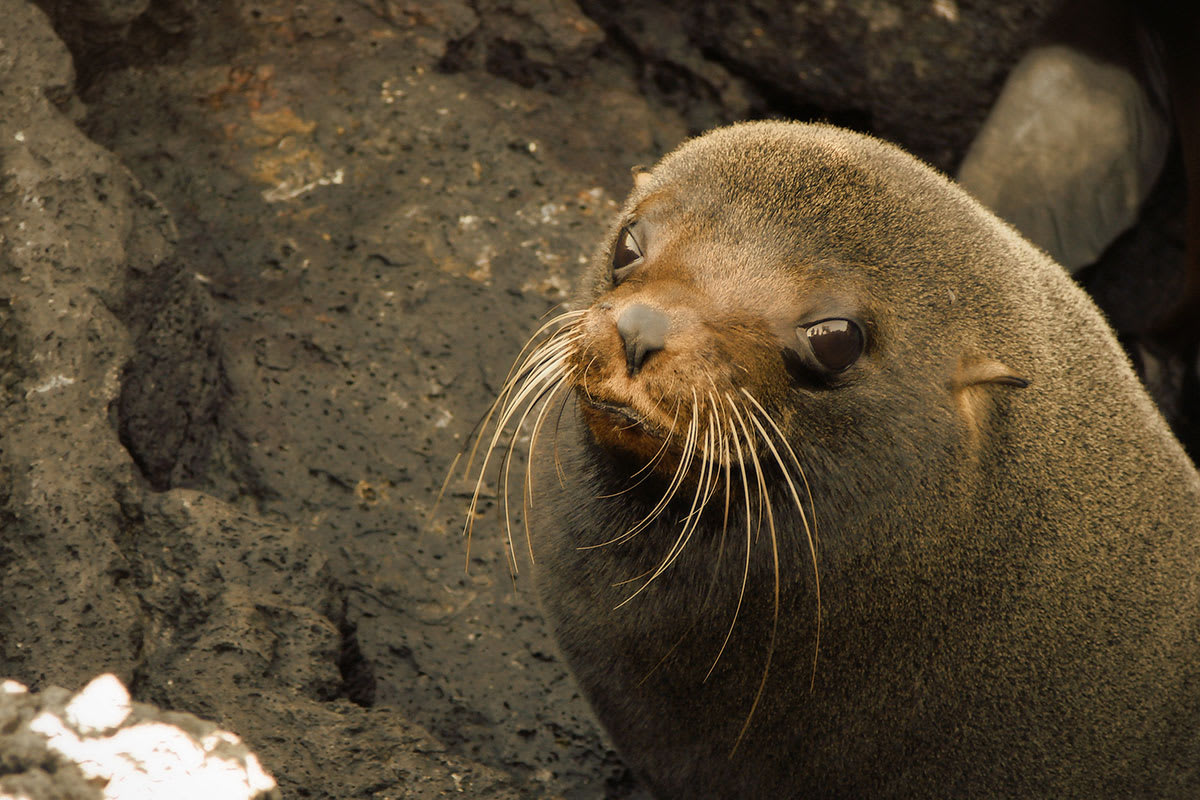
Disembarkation
AM: After breakfast, enjoy the visit to Black Turtle Cove, which is located on the north shore of Santa Cruz. It is a living illustration of how mangroves alter the marine environment to create a rich and unique habitat. Three mangrove species crowd the area from the shore out into the lagoon, which reaches almost a mile inland.
As you drift through quiet waters in the zodiac, you are likely to see spotted eagle rays and diamond shaped mustard rays, which swim in a diamond formation. White-tipped reef sharks slip beneath the boat and Pacific green sea turtles come to the surface for air and to mate. Waterfowl, including pelicans, herons and egret, all feed in the cove. This is a peaceful place that will make you feel calm.
Your cruise has officially come to an end. We hope you enjoyed your Galapagos Cruise! We will now transfer you to your scheduled departure from Baltra Airport to mainland Ecuador. Safe travels!
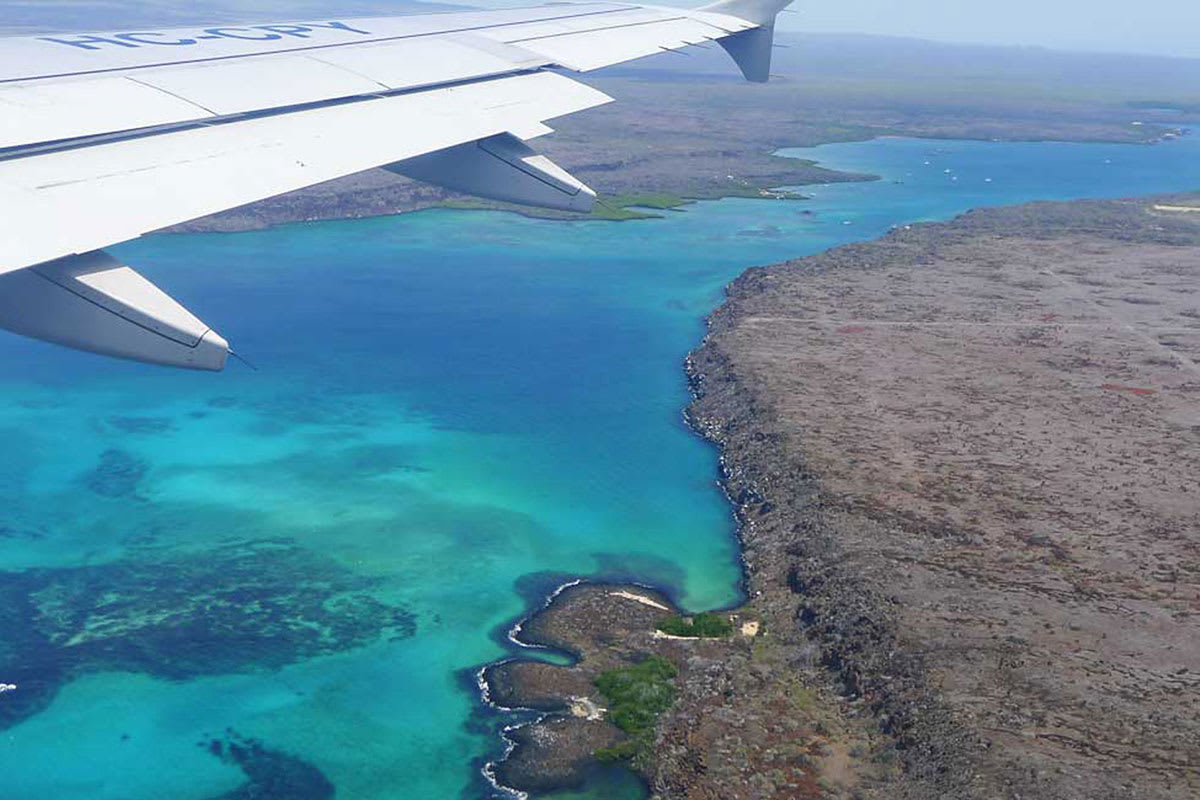
Accommodations
Social Areas
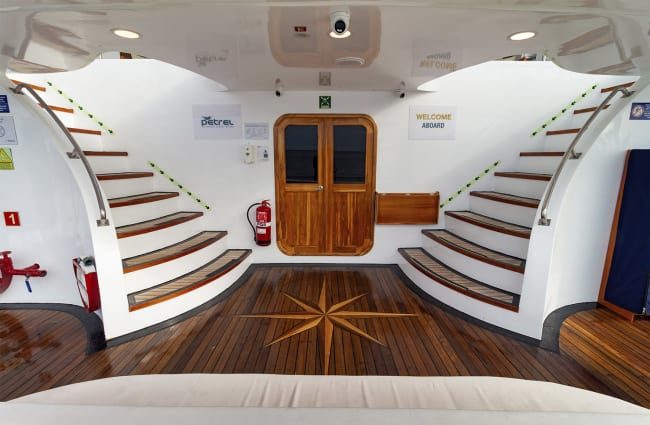
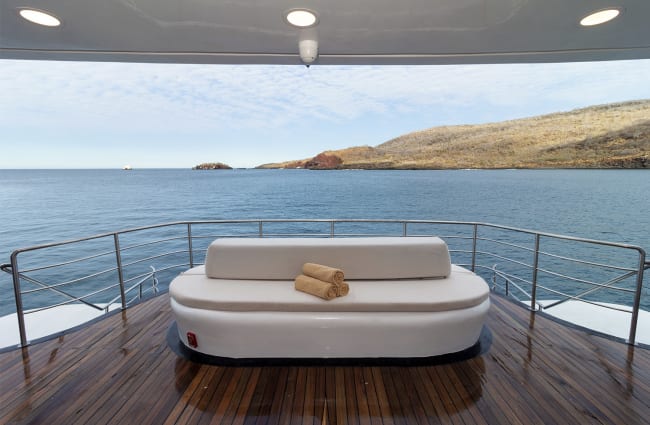

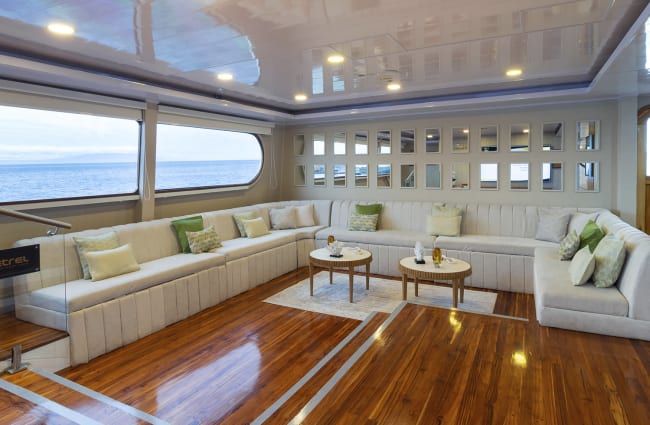
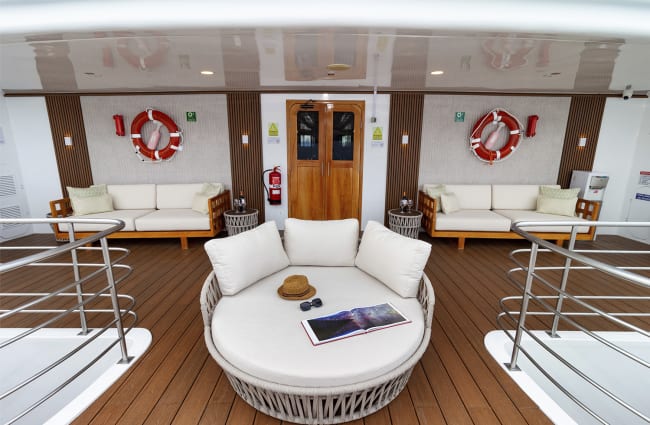

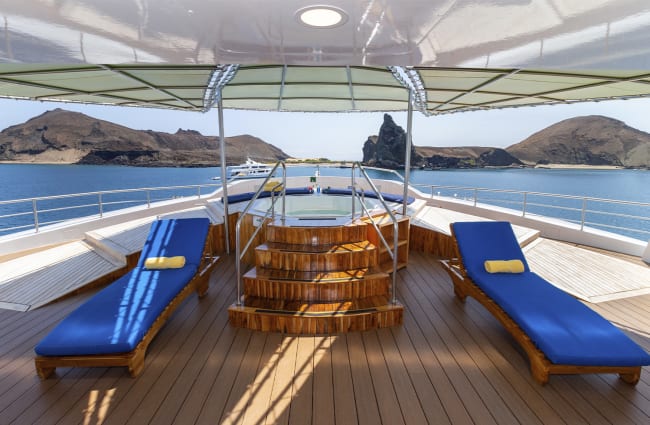

Suites & Cabins







Golden Stateroom
Enjoy the extensive Staterooms with huge windows allowing natural light to flow into the room. You can also enjoy the privacy of your own terrace while enjoying the oceanic views. The room features a safety deposit box, a spacious wardrobe to fit all your items.



Golden Suite
The Petrel Suites come with a large panoramic view of the ocean and a private balcony. It also features an ensuite living room, a large wardrobe, and a safe deposit box. The bathrooms are equipped with a hot shower ensuring you enjoy a refreshing shower.



Single Cabin
Enjoy the private single room with huge windows allowing natural light to flow into the room. The room features a safety deposit box, a spacious wardrobe to fit all your items, air conditioning and a gorgeous private balcony to enjoy open views of the enchanted islands.
Related Cruises
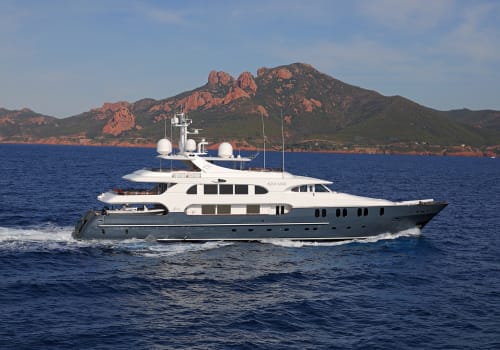
- Galapagos
- Ecuador
Aqua Mare

- Galapagos
- Ecuador
Cormorant II
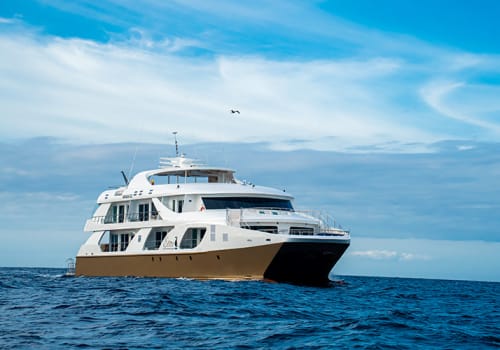
- Galapagos
- Ecuador
Elite

- Galapagos
- Ecuador
Galaxy Sirius
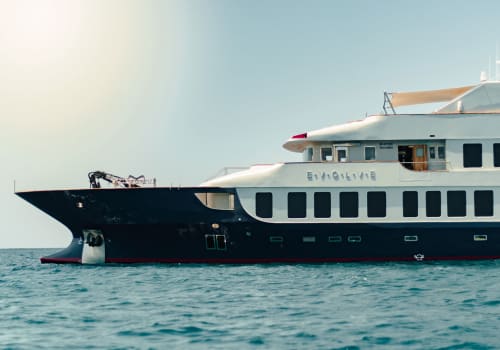
- Galapagos
- Ecuador
Origin, Theory & Evolve
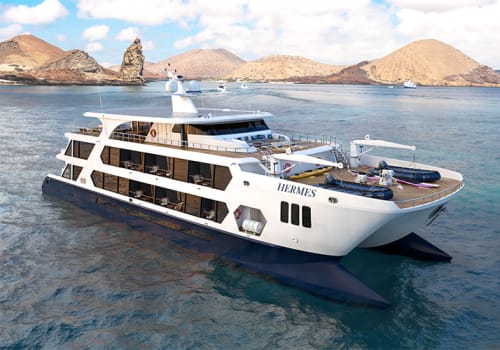
- Galapagos
- Ecuador
Hermes
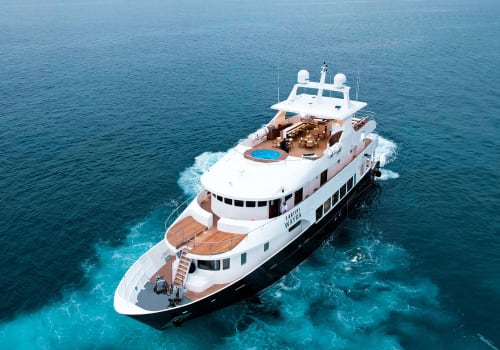
- Ecuador
- Costa Rica
Kontiki Wayra
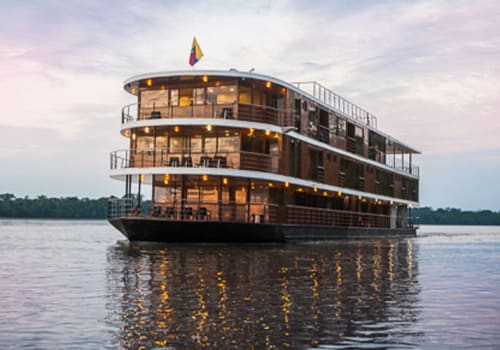
- Amazon
- Ecuador
Anakonda
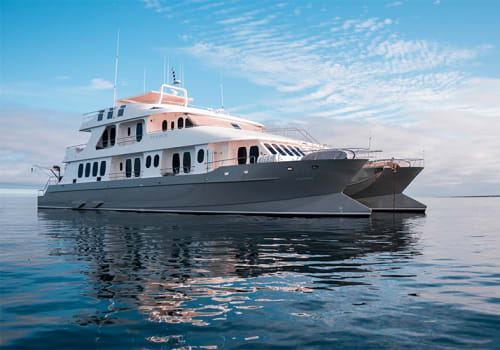
- Galapagos
- Ecuador
Alya
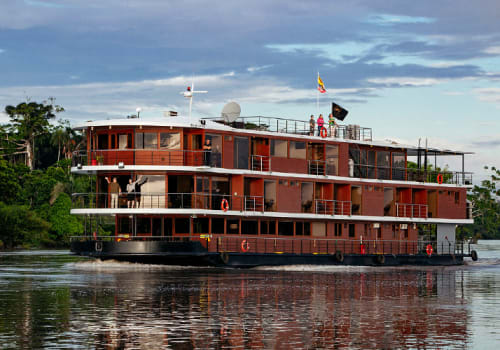
- Amazon
- Ecuador
Manatee Amazon Explorer

- Galapagos
- Ecuador
Endemic
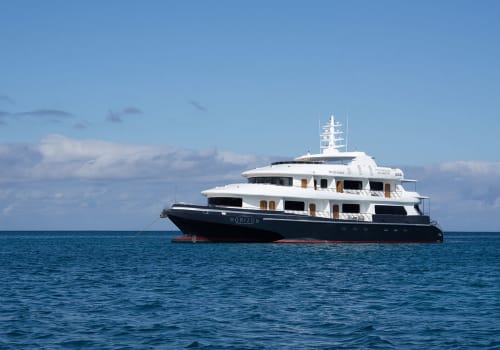
- Galapagos
- Ecuador
Galapagos Horizon
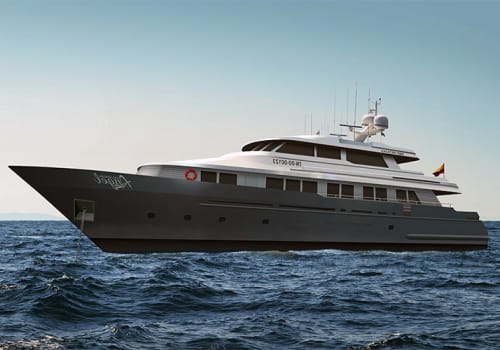
- Galapagos
- Ecuador

